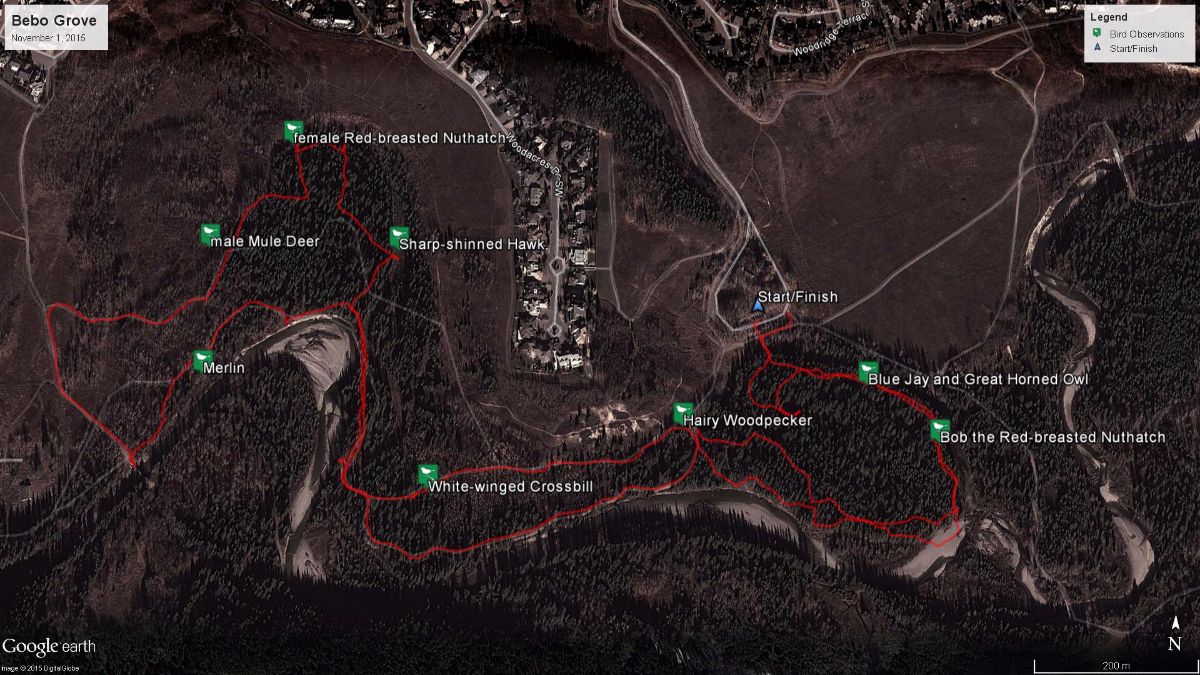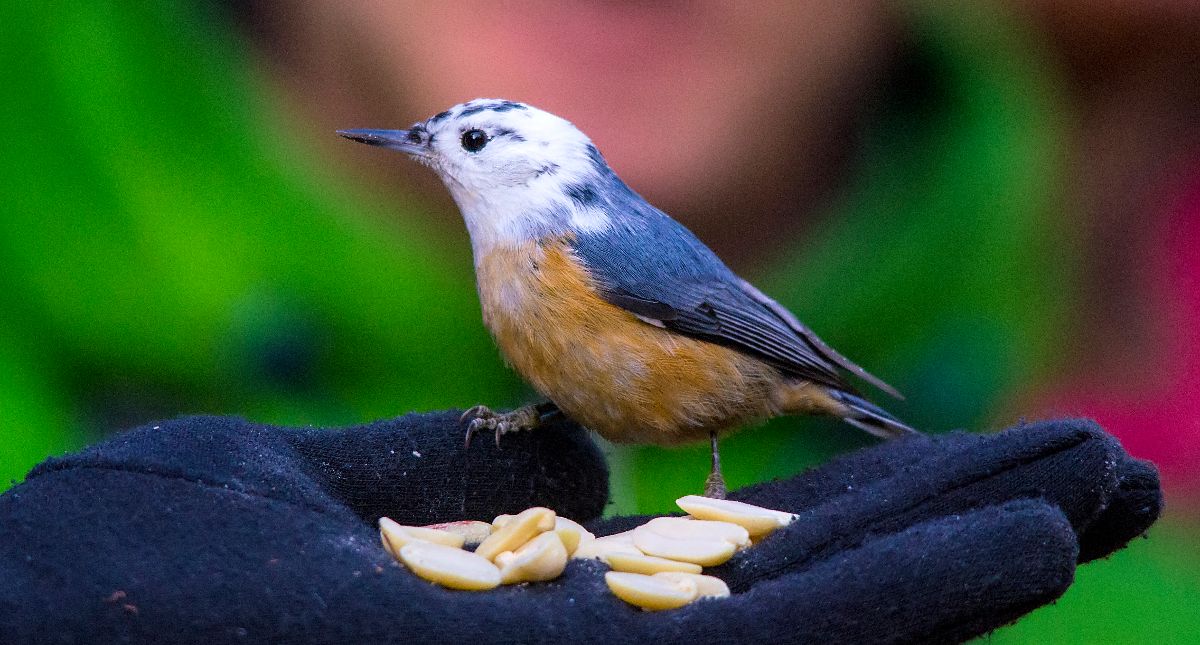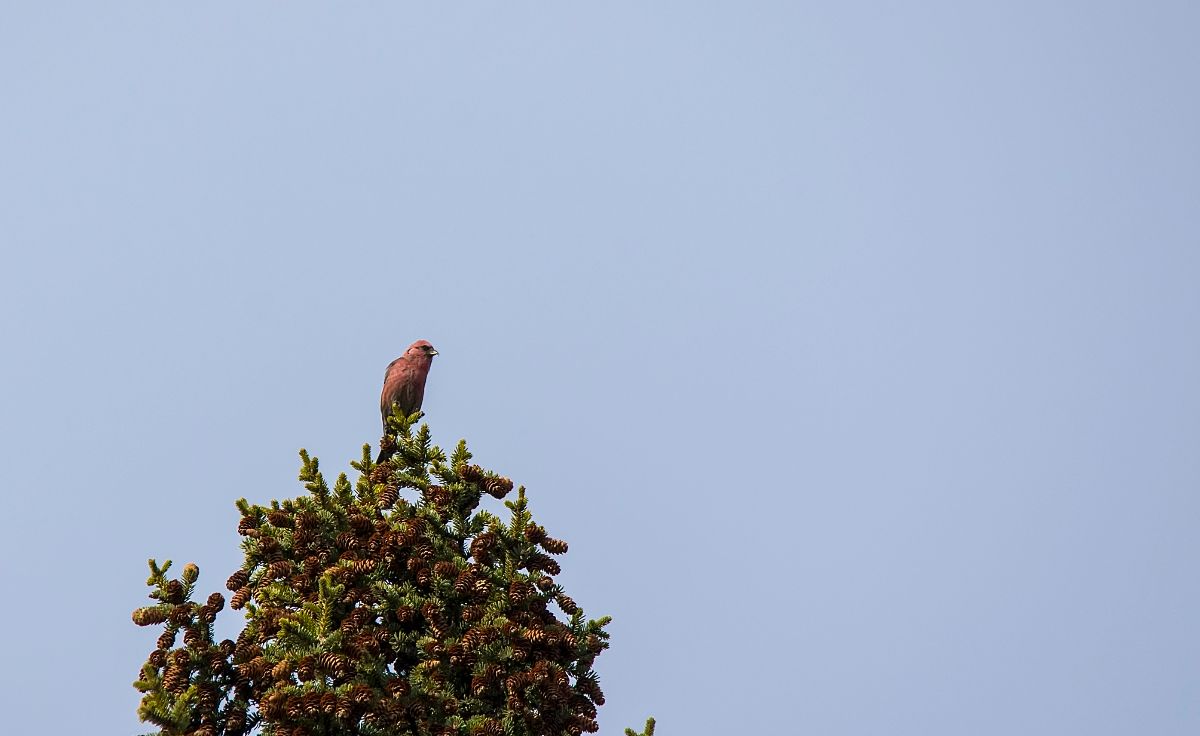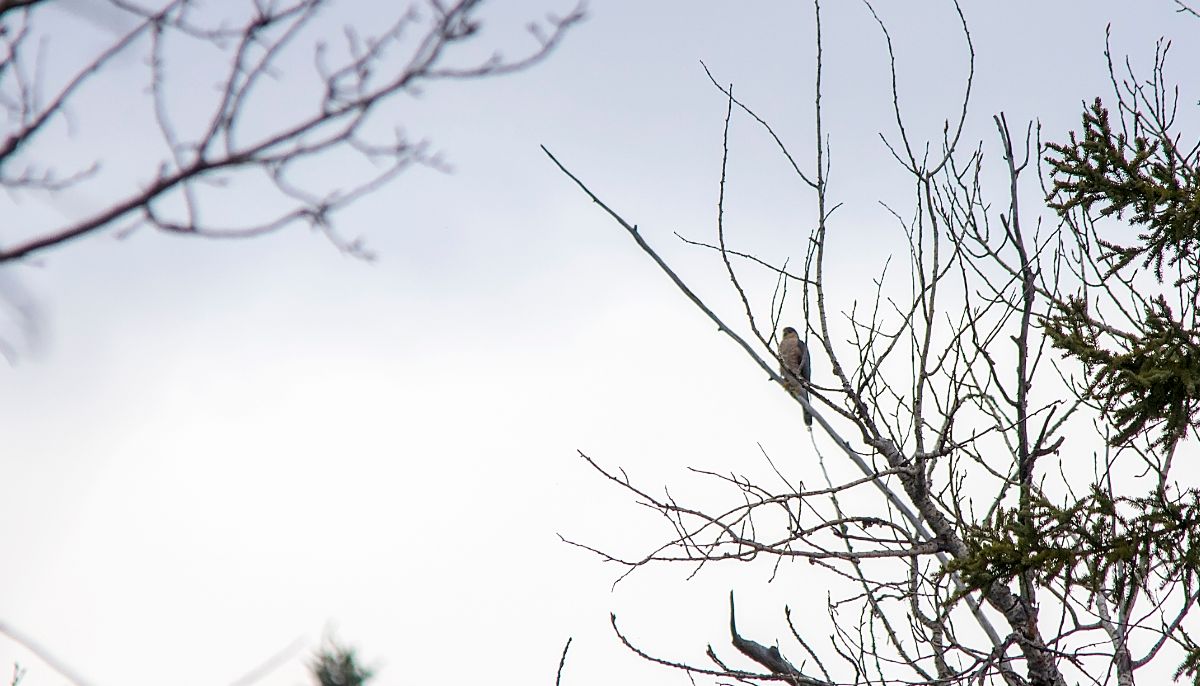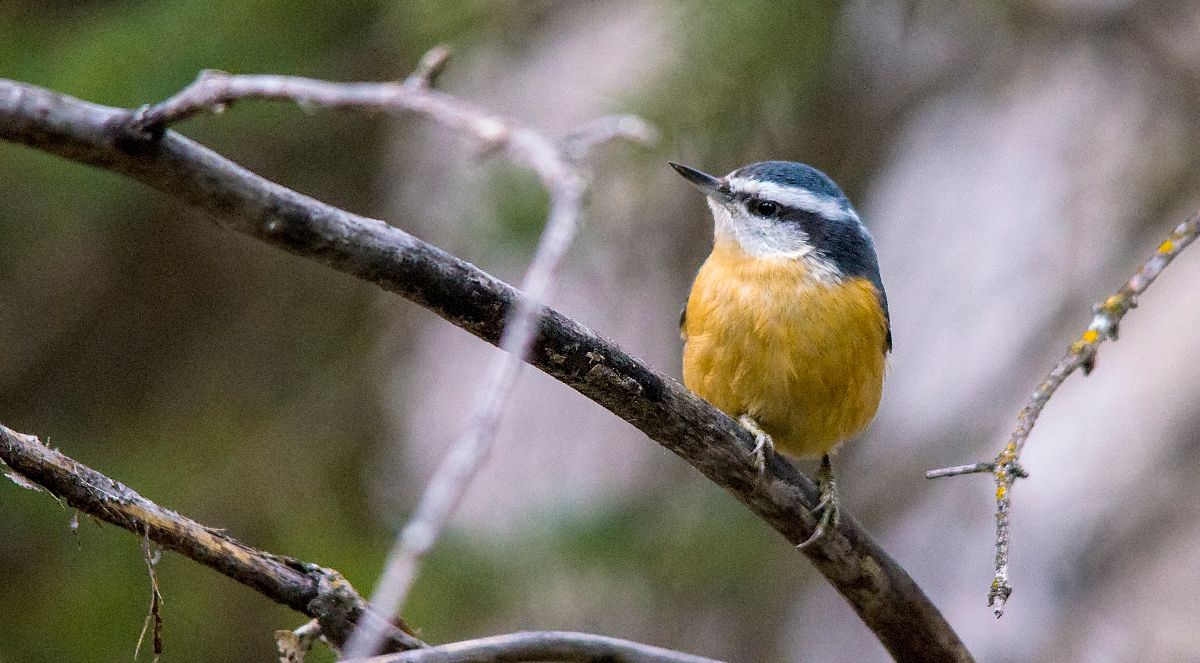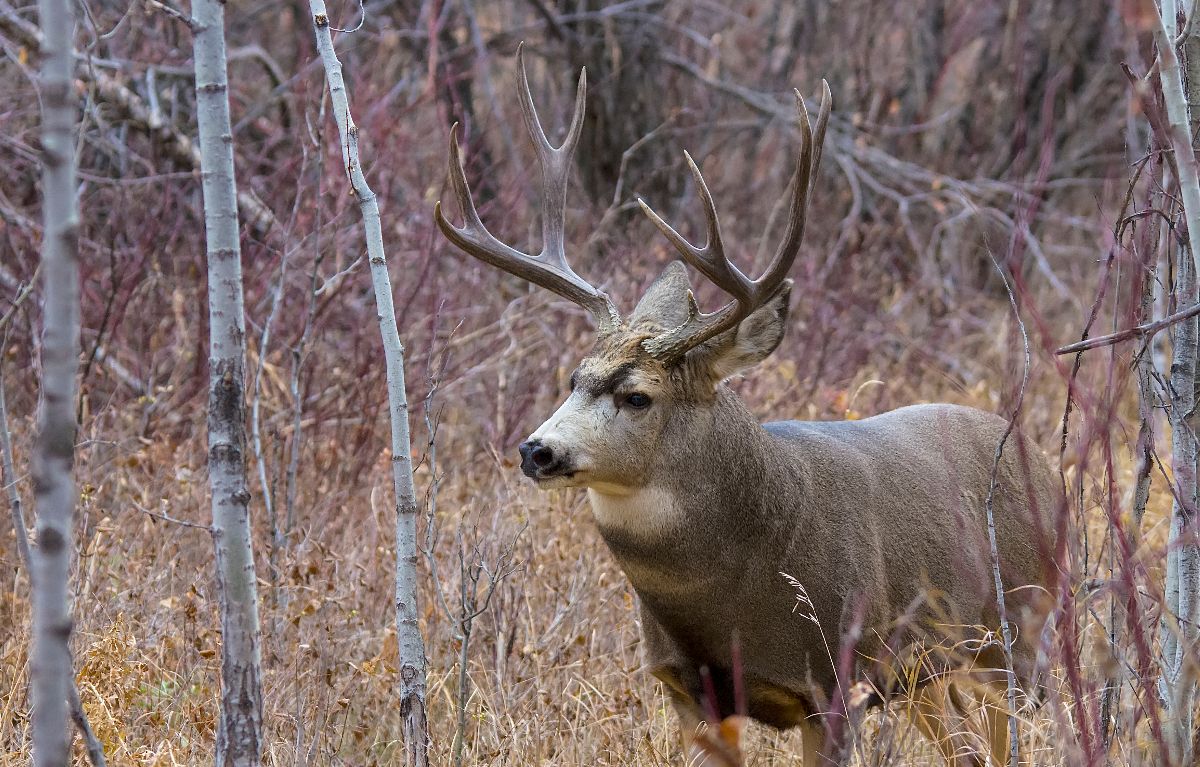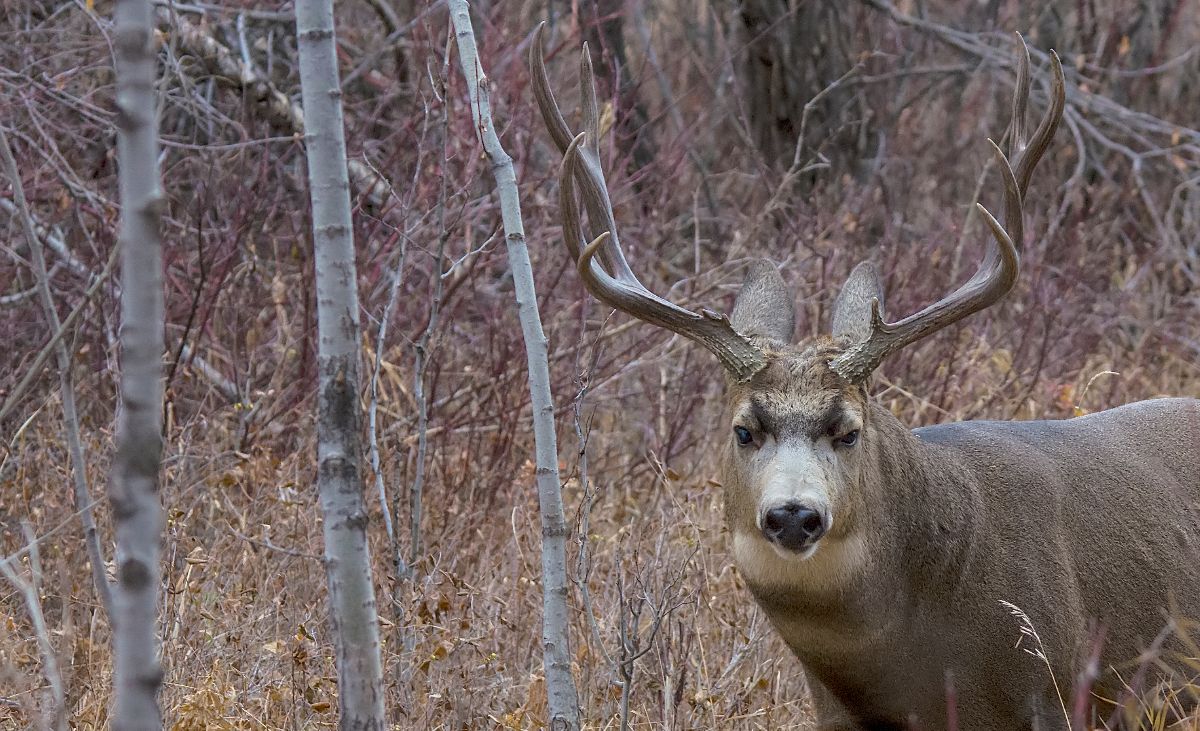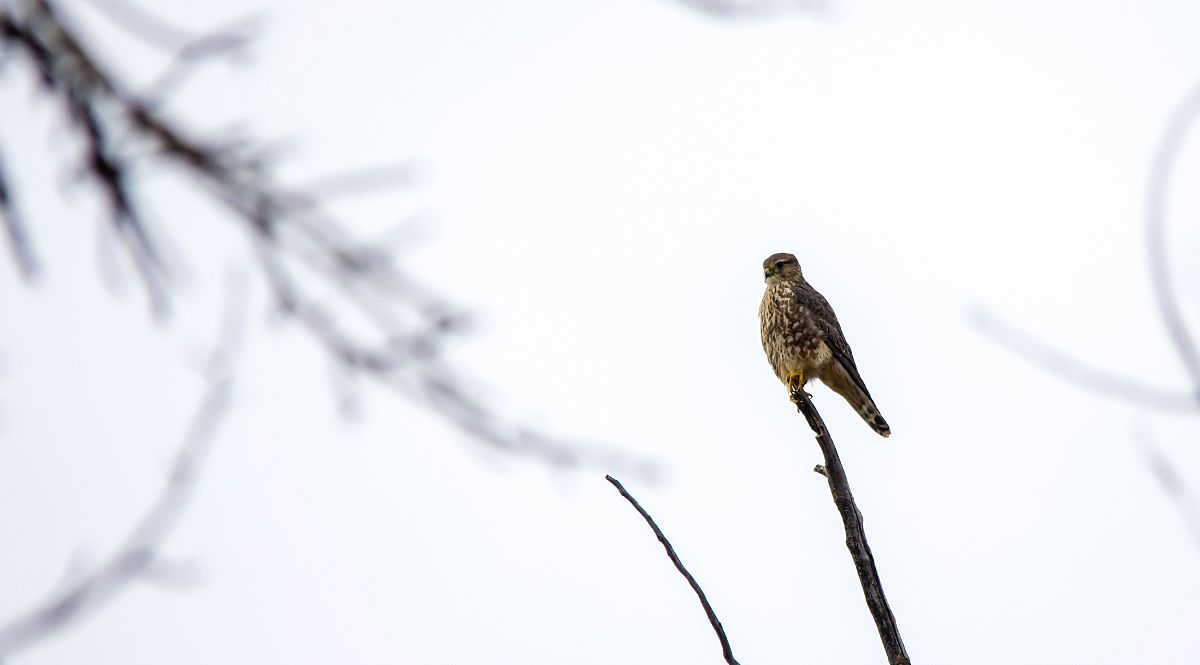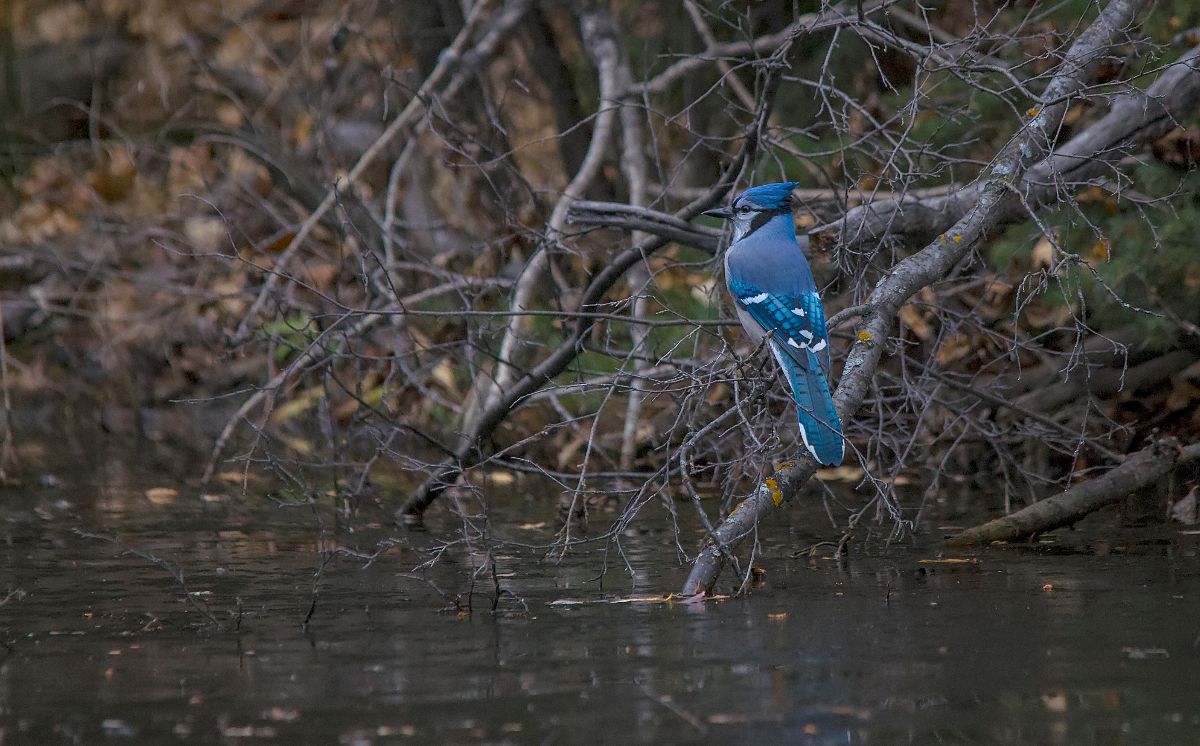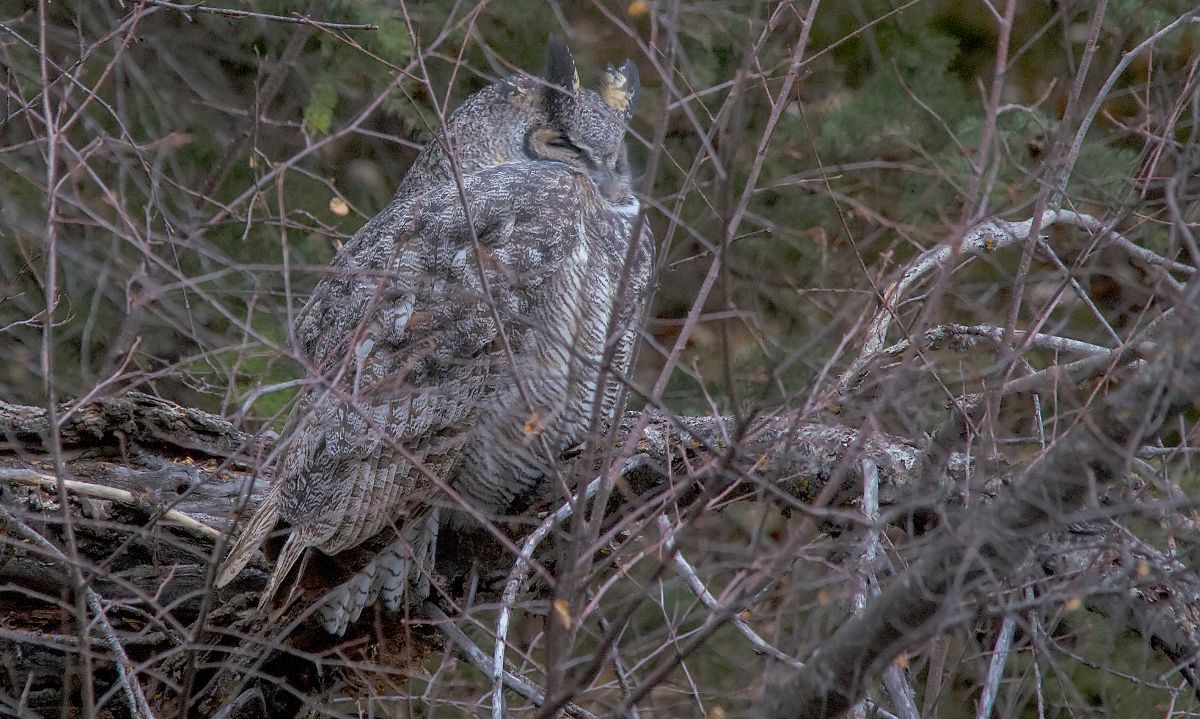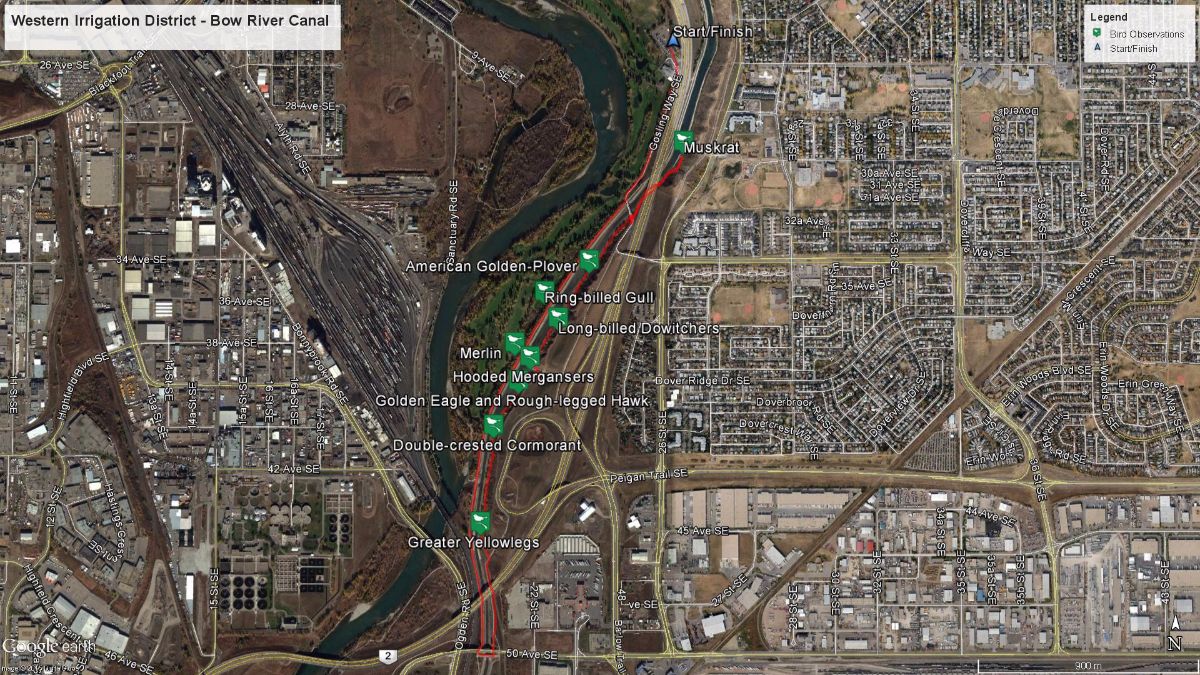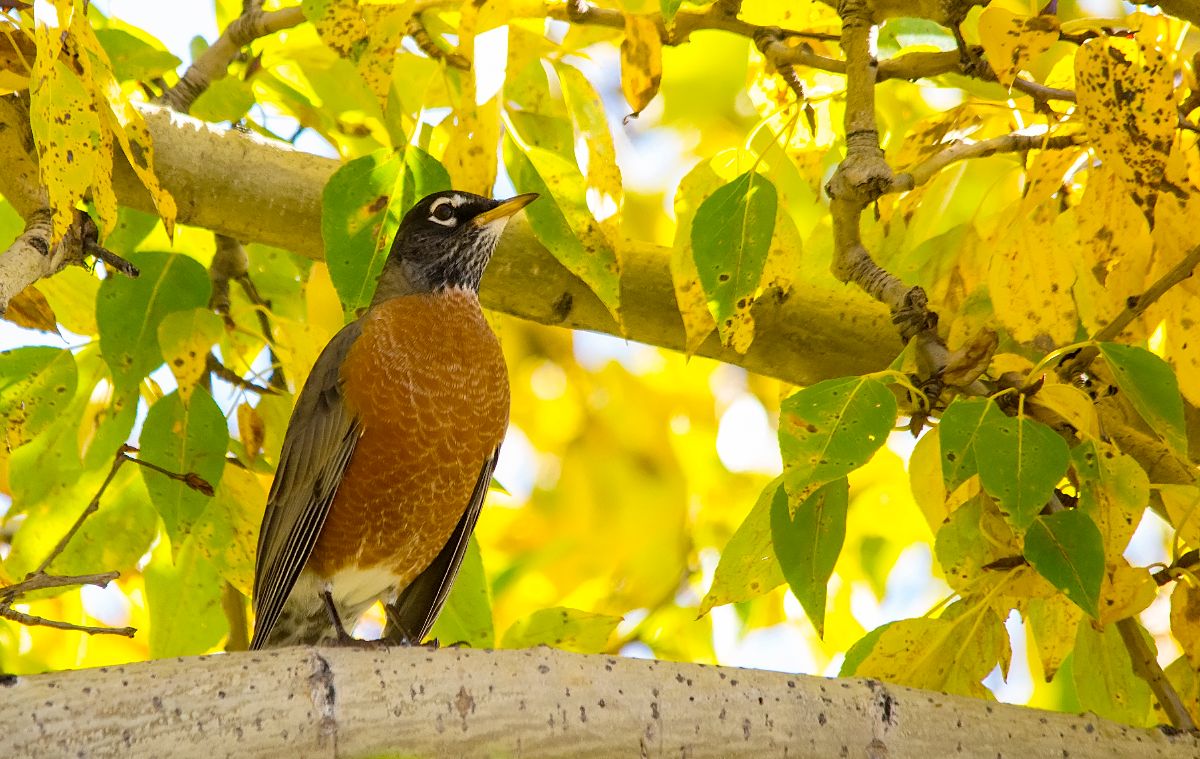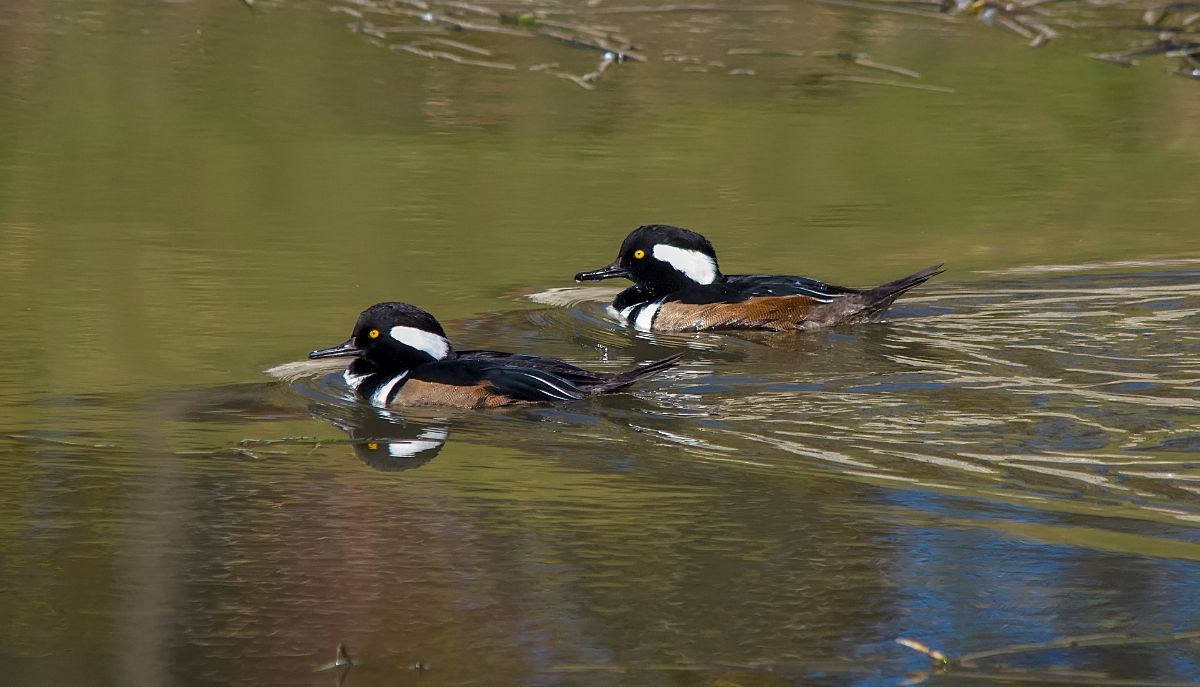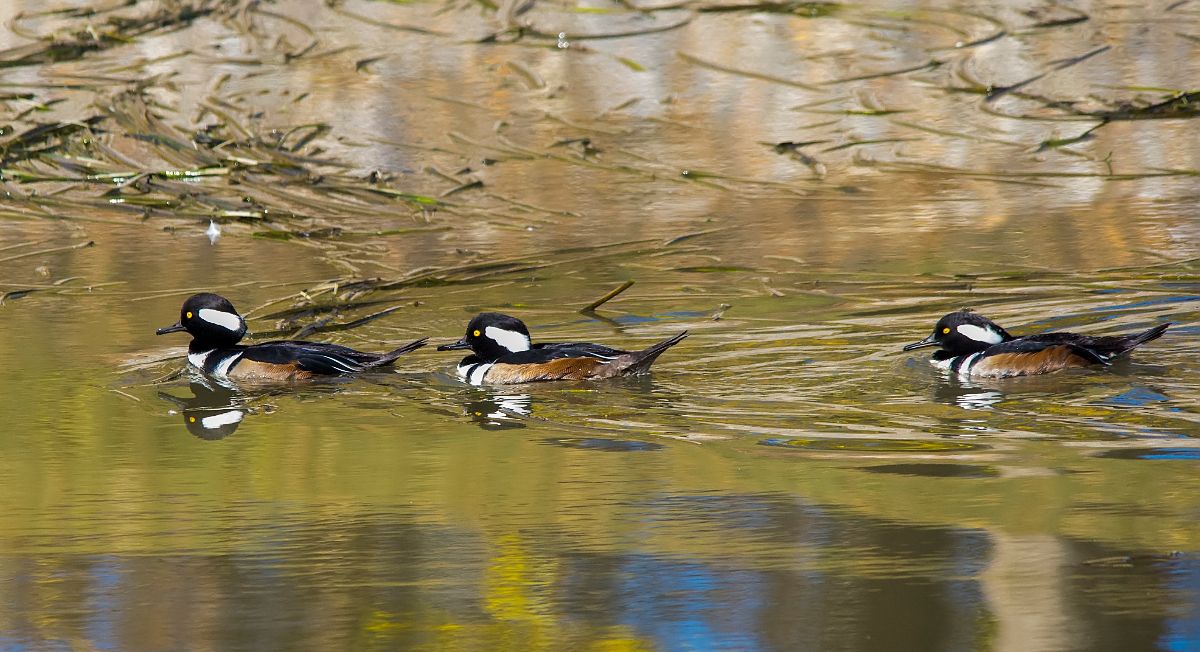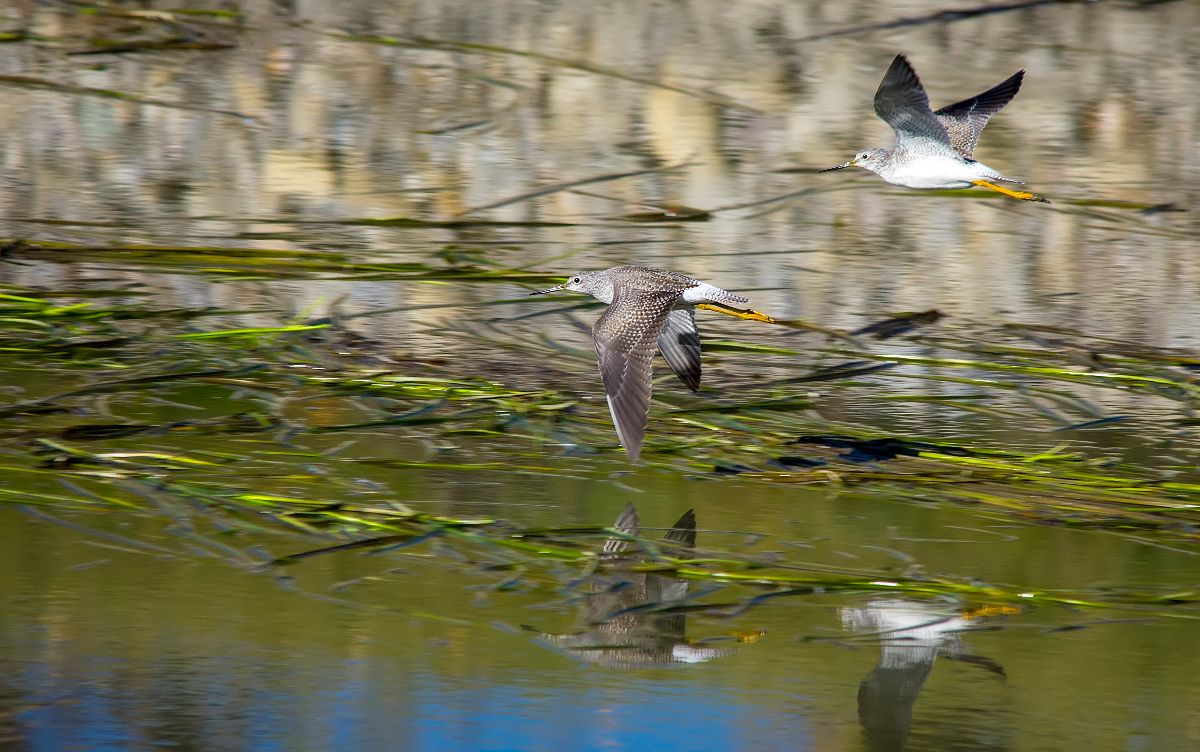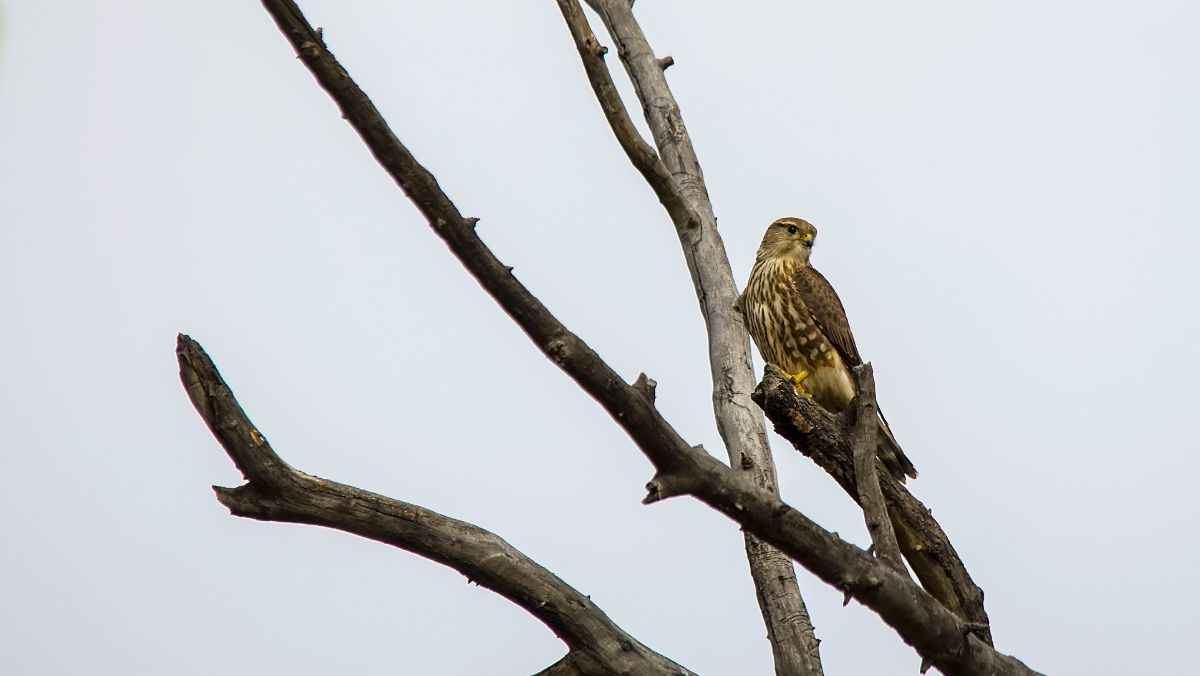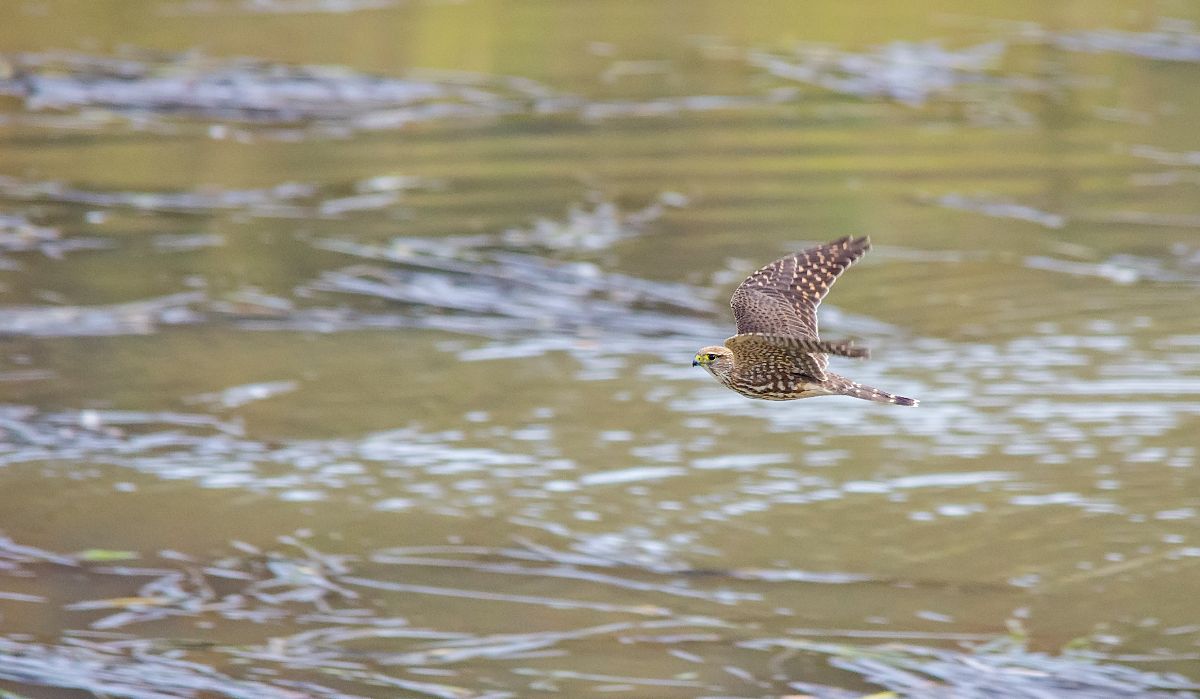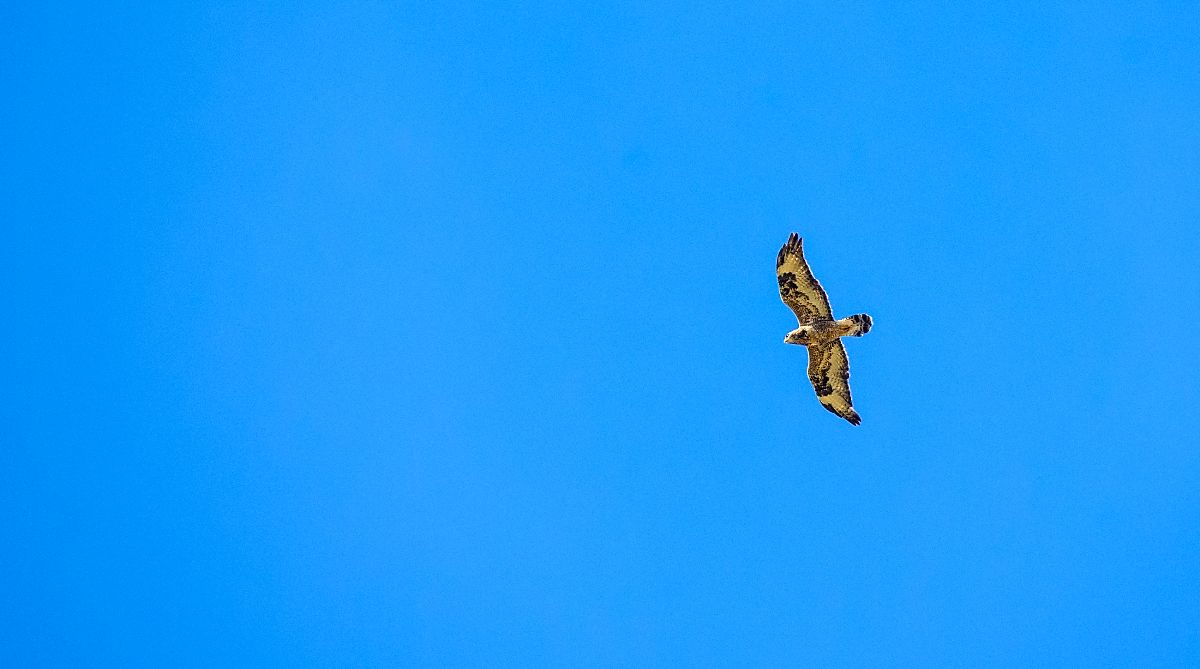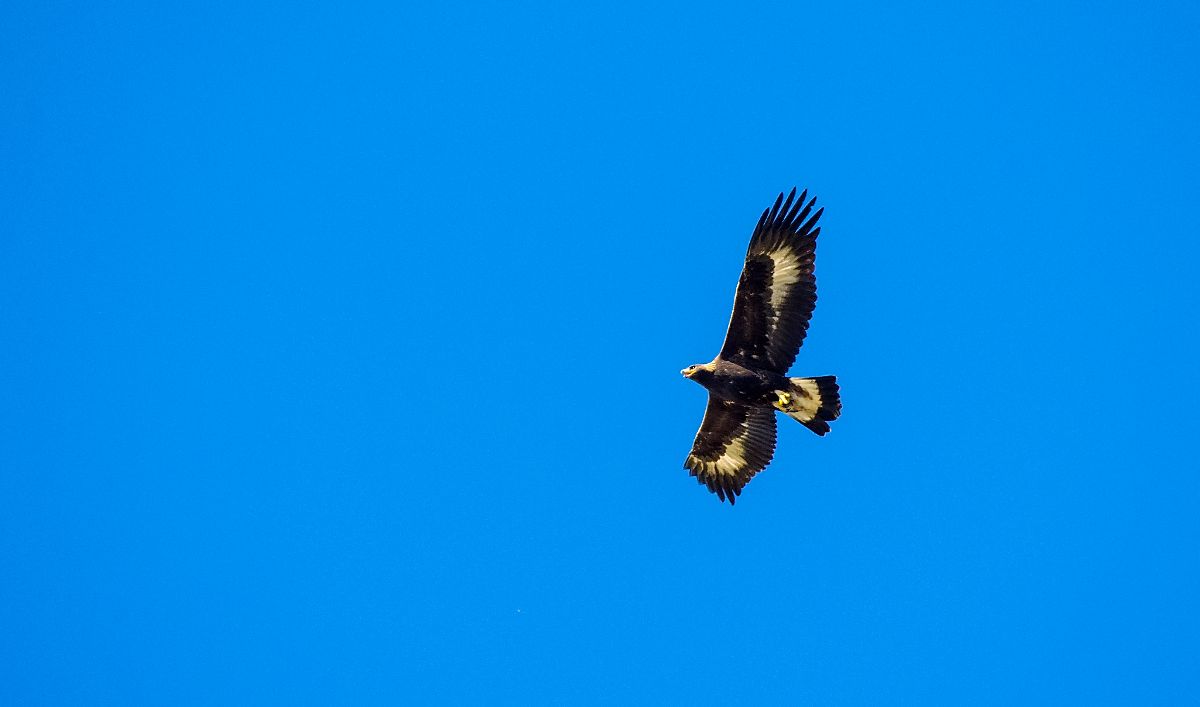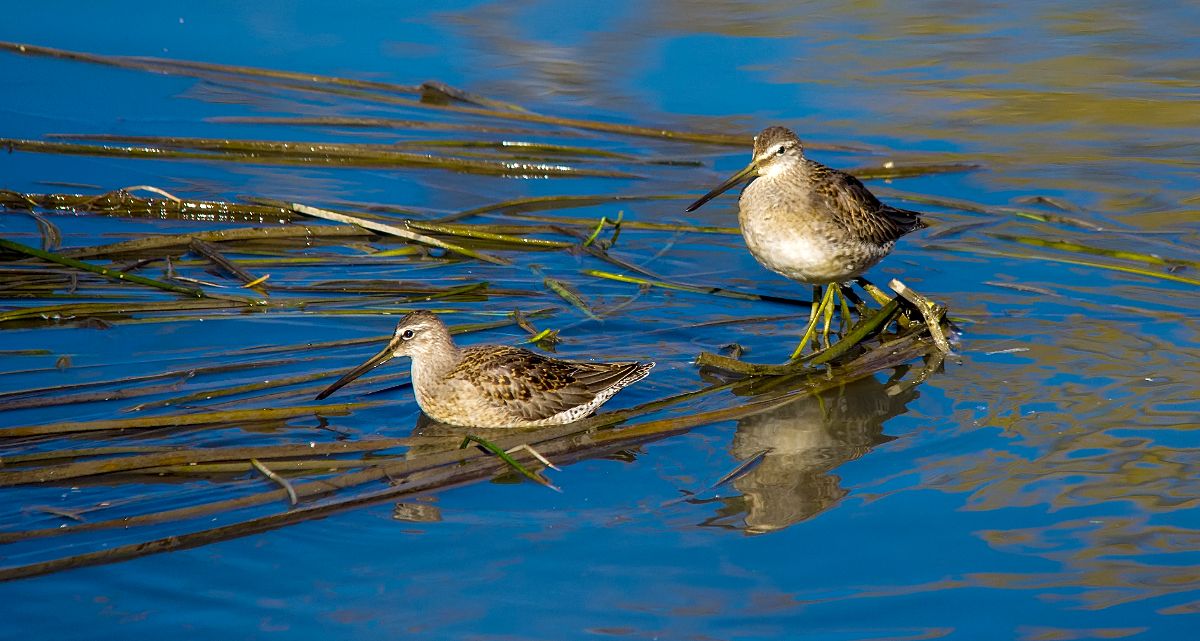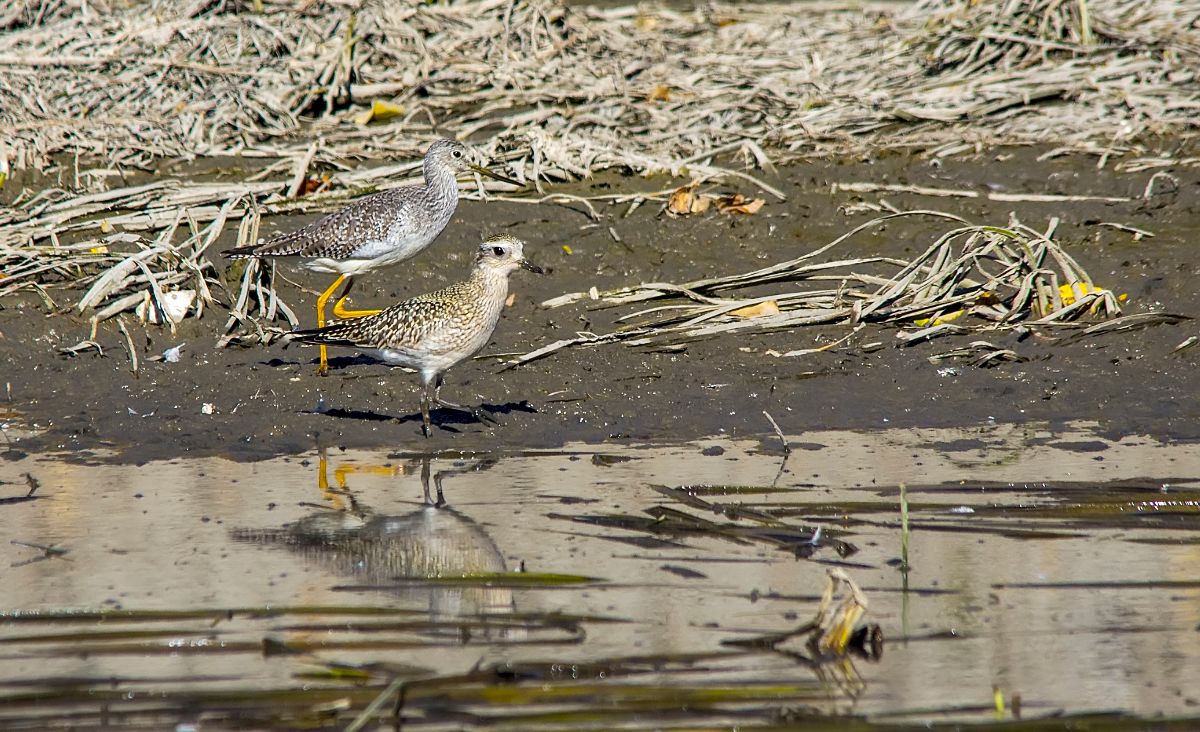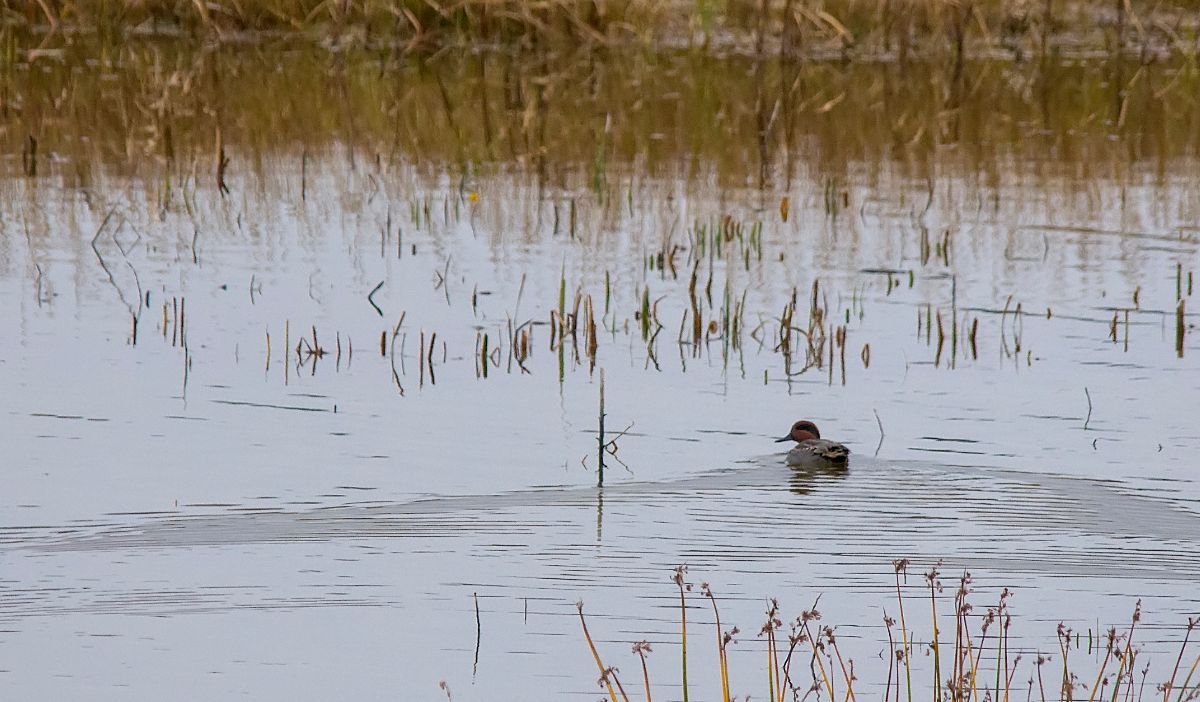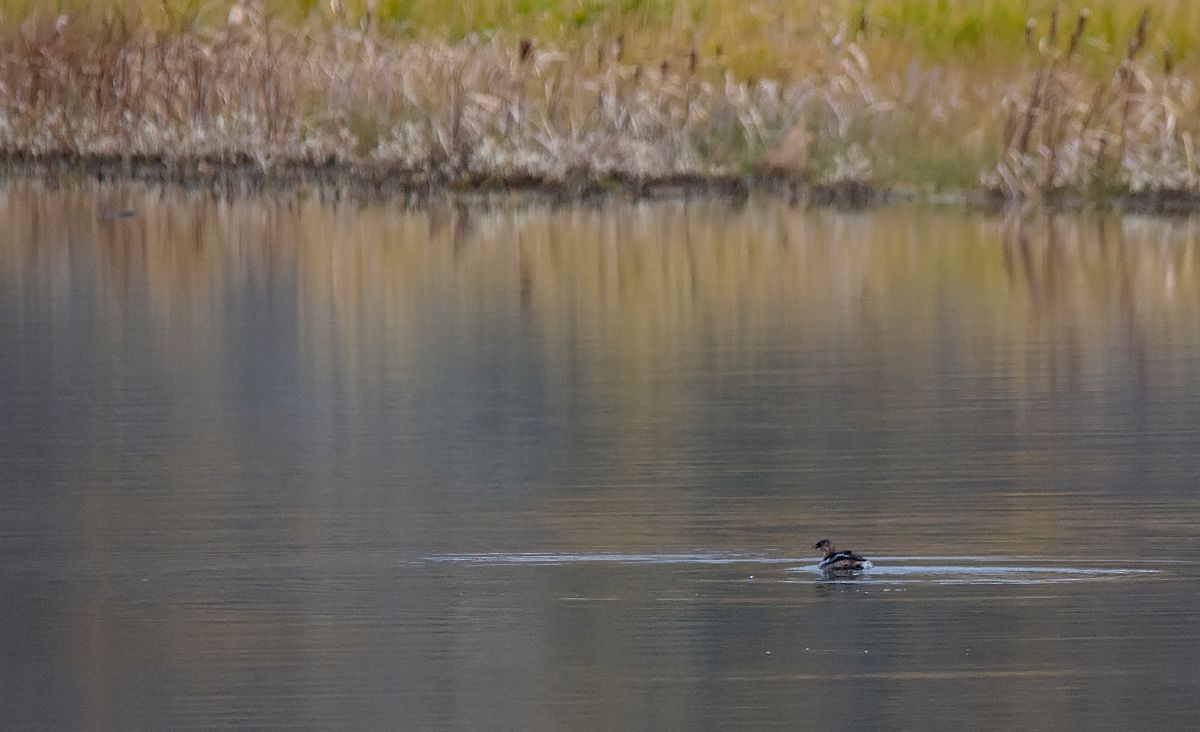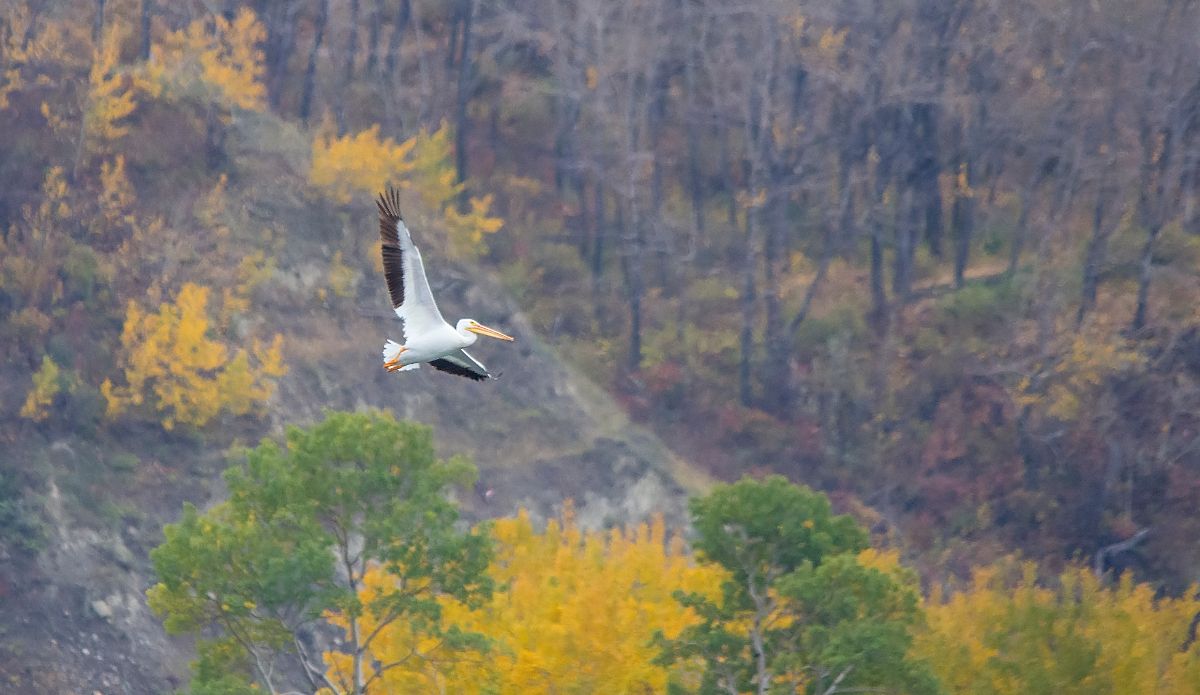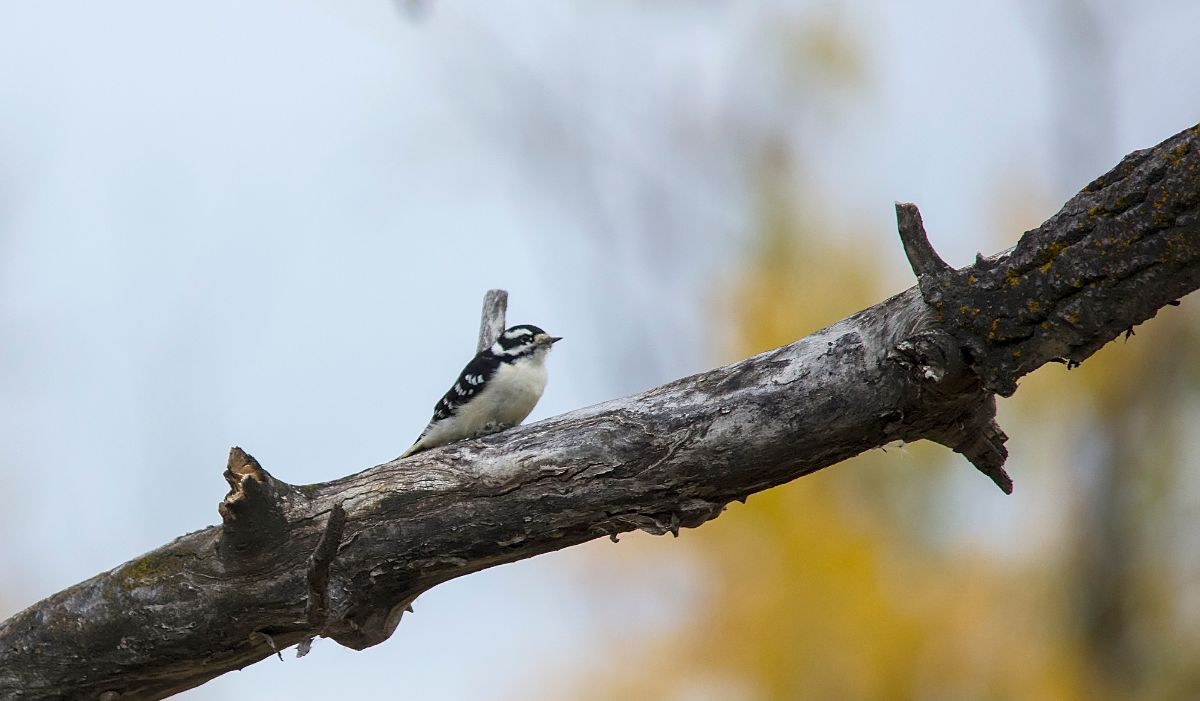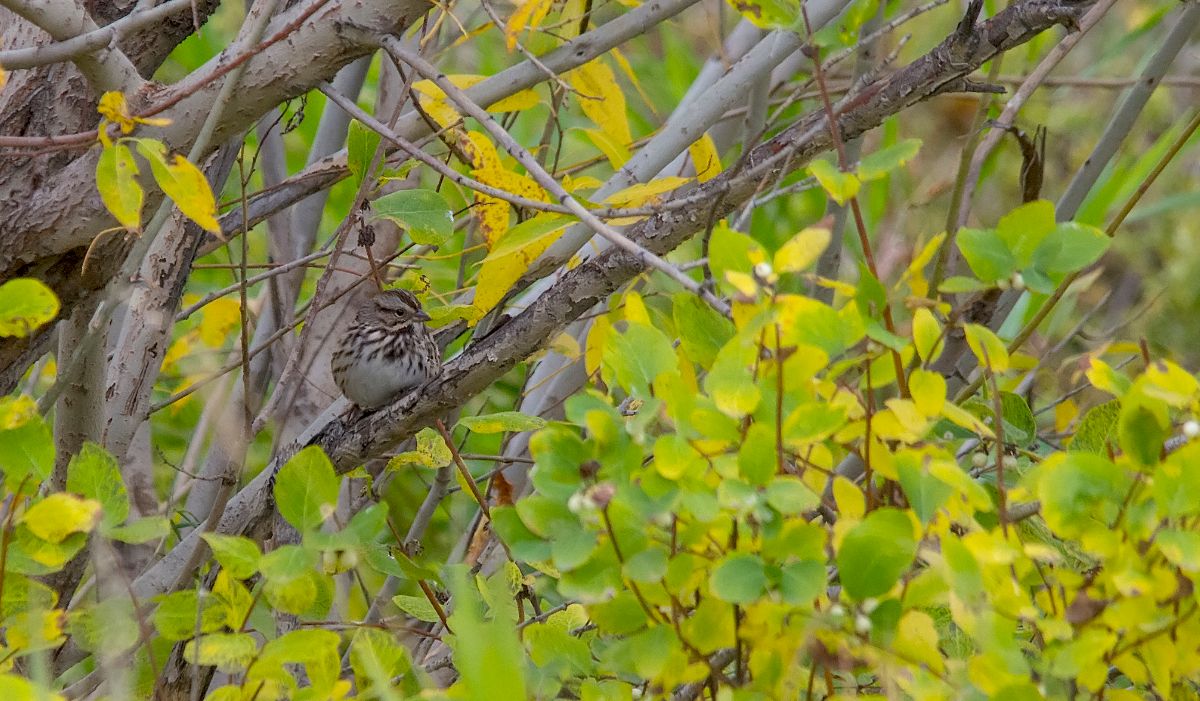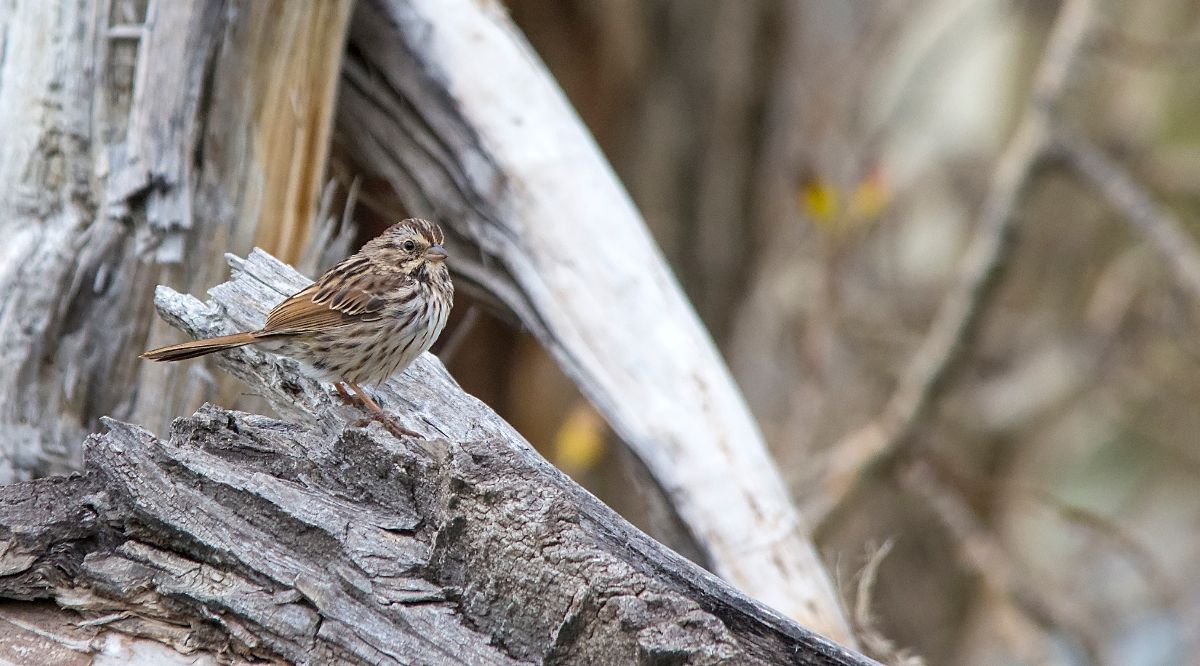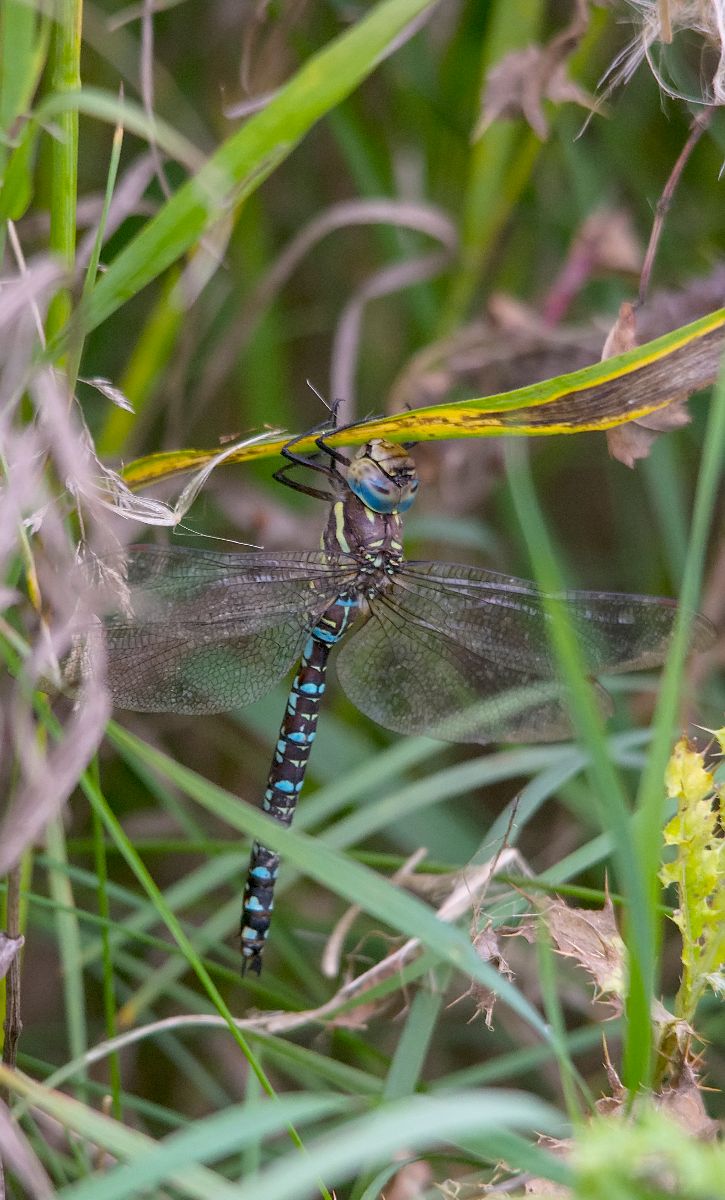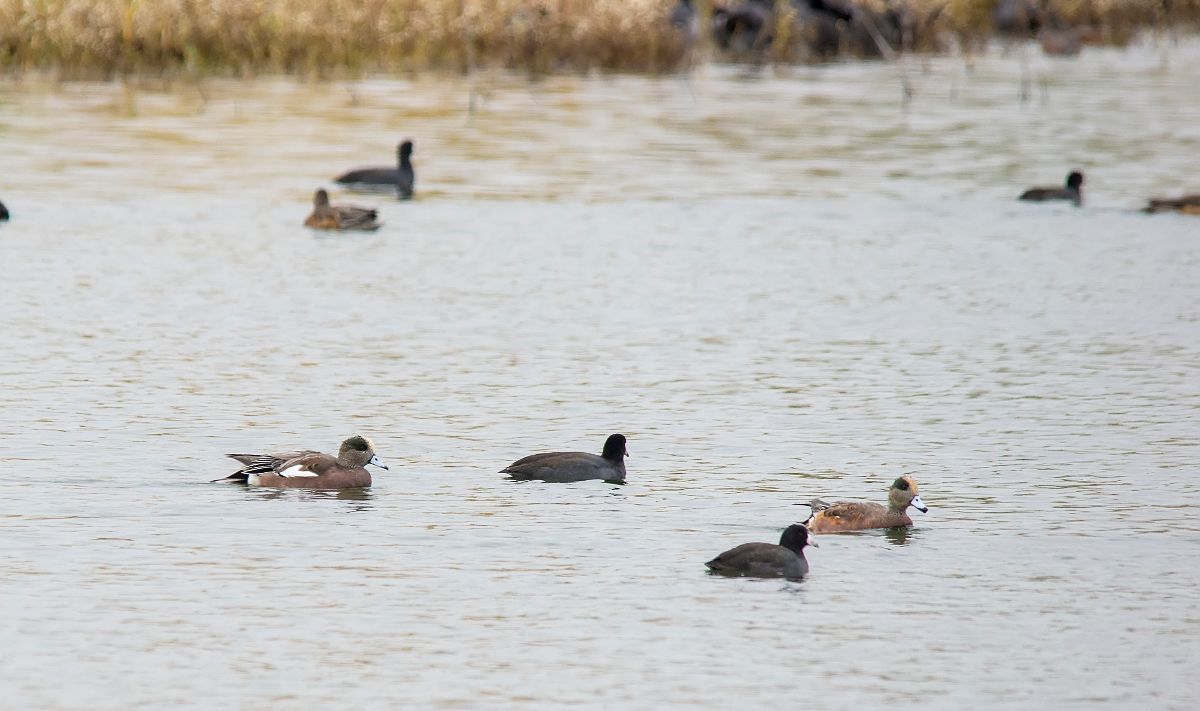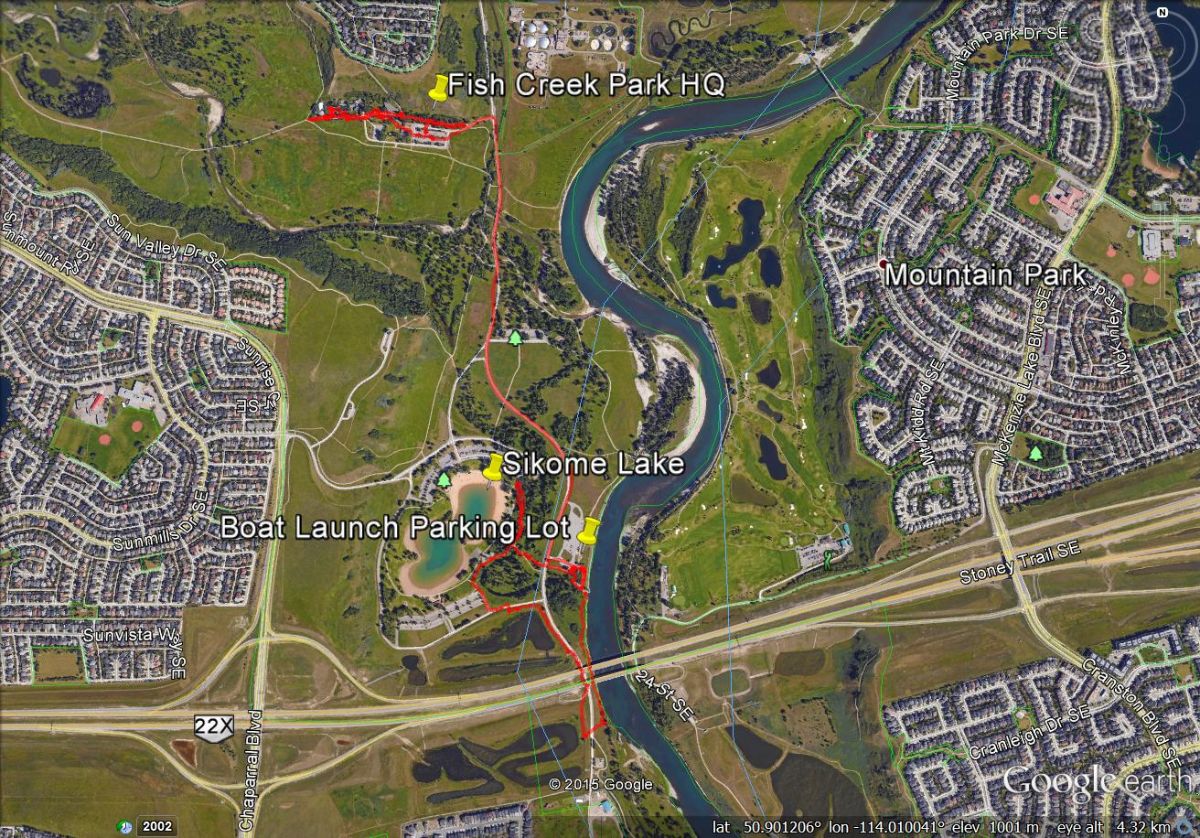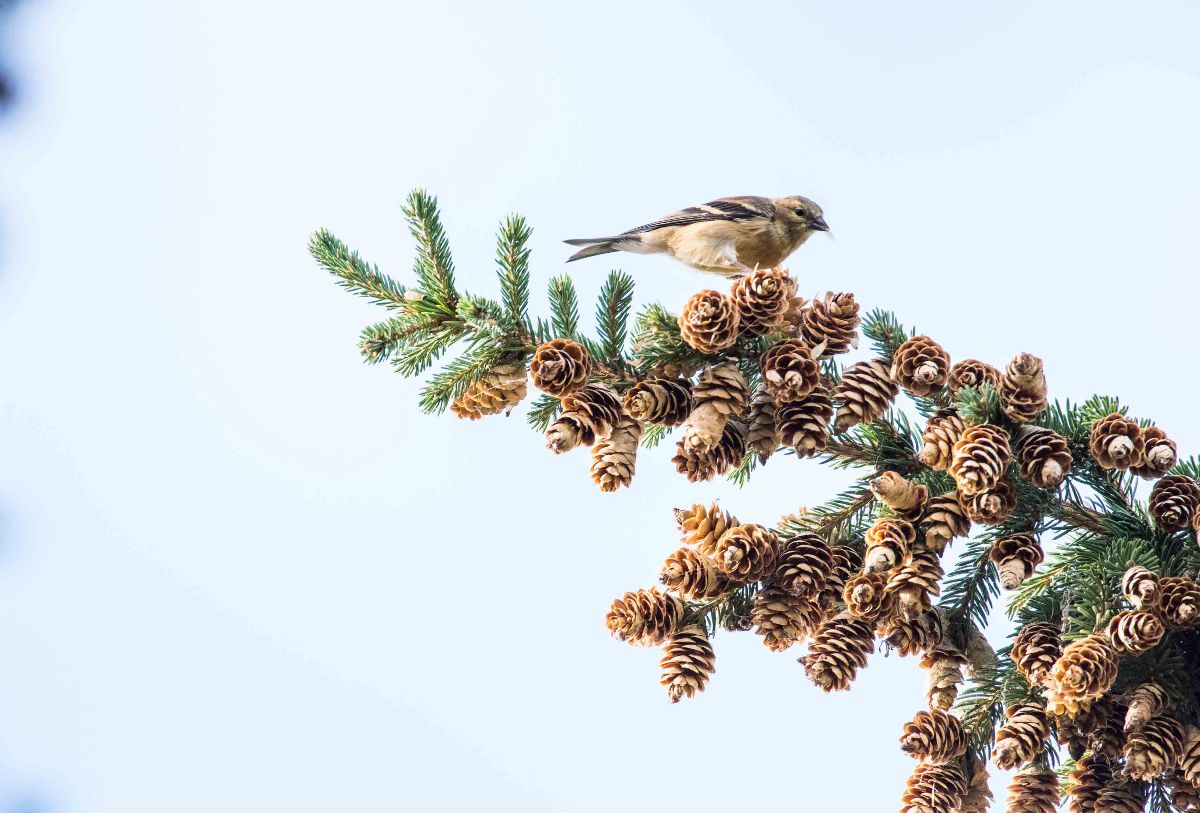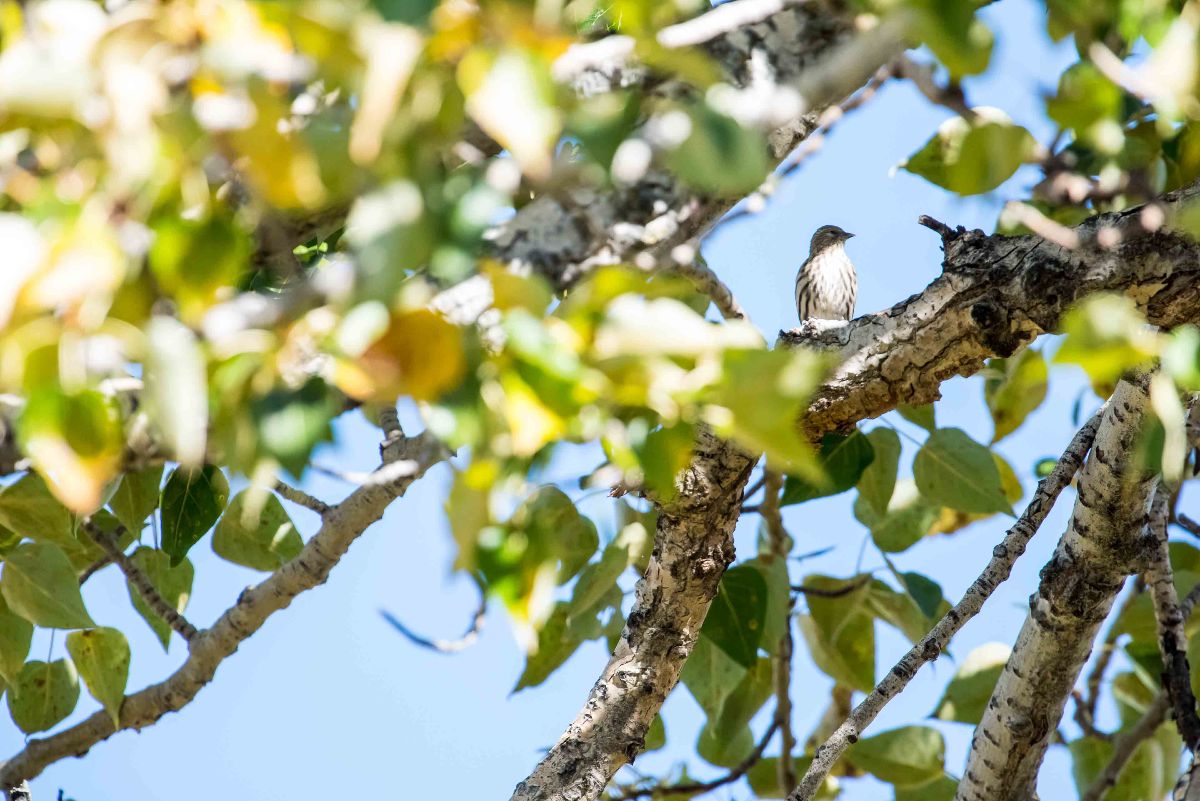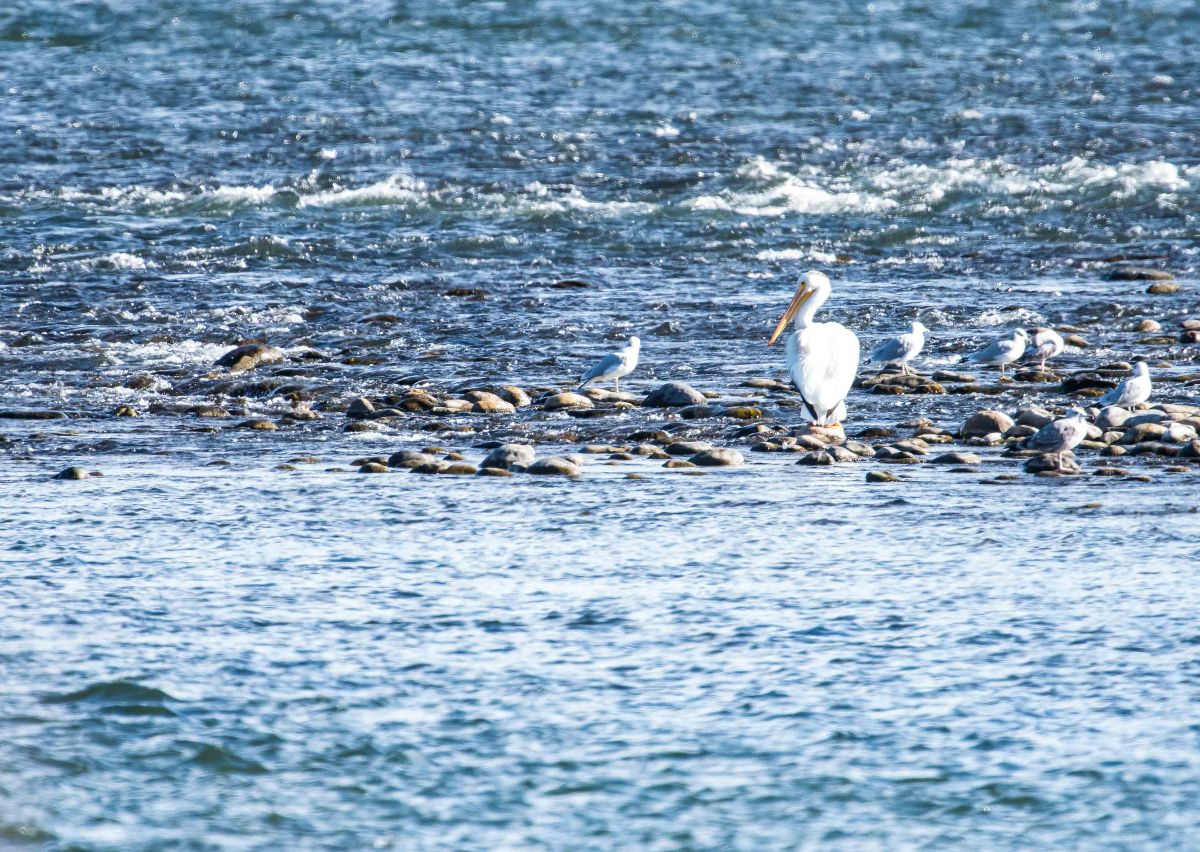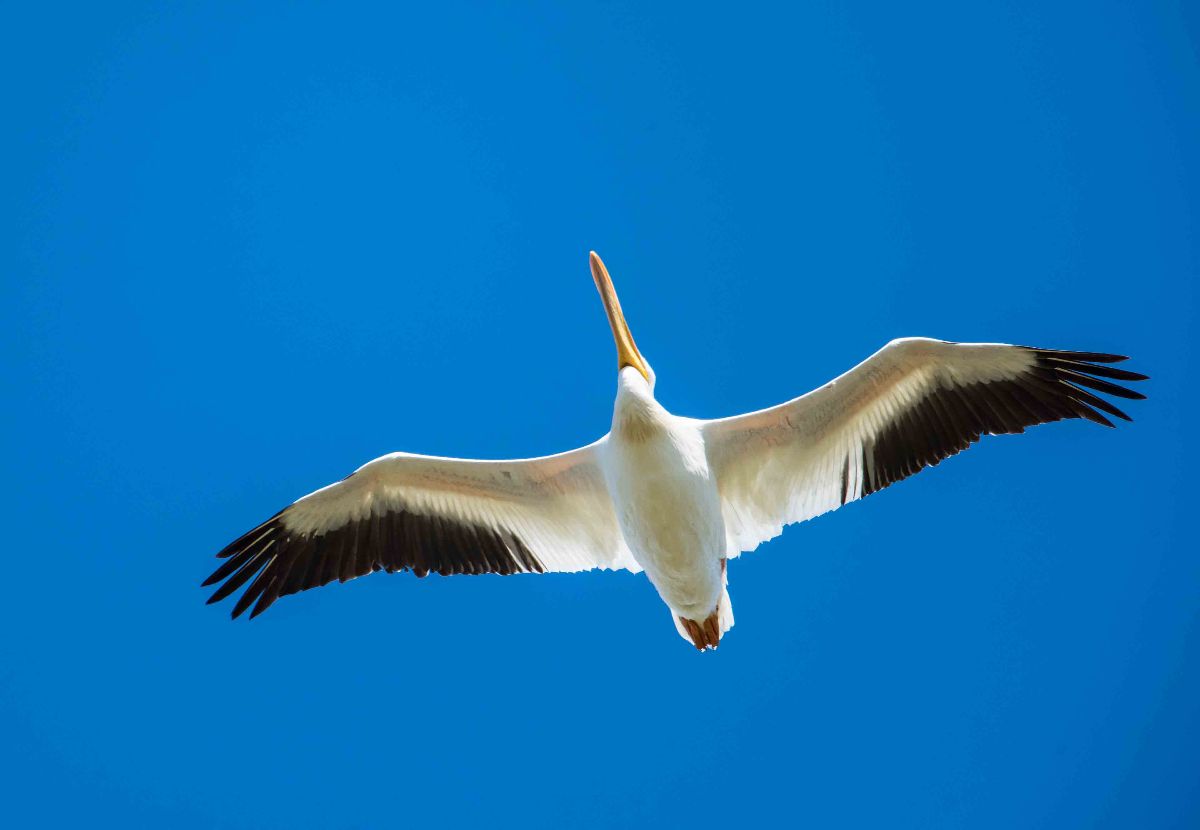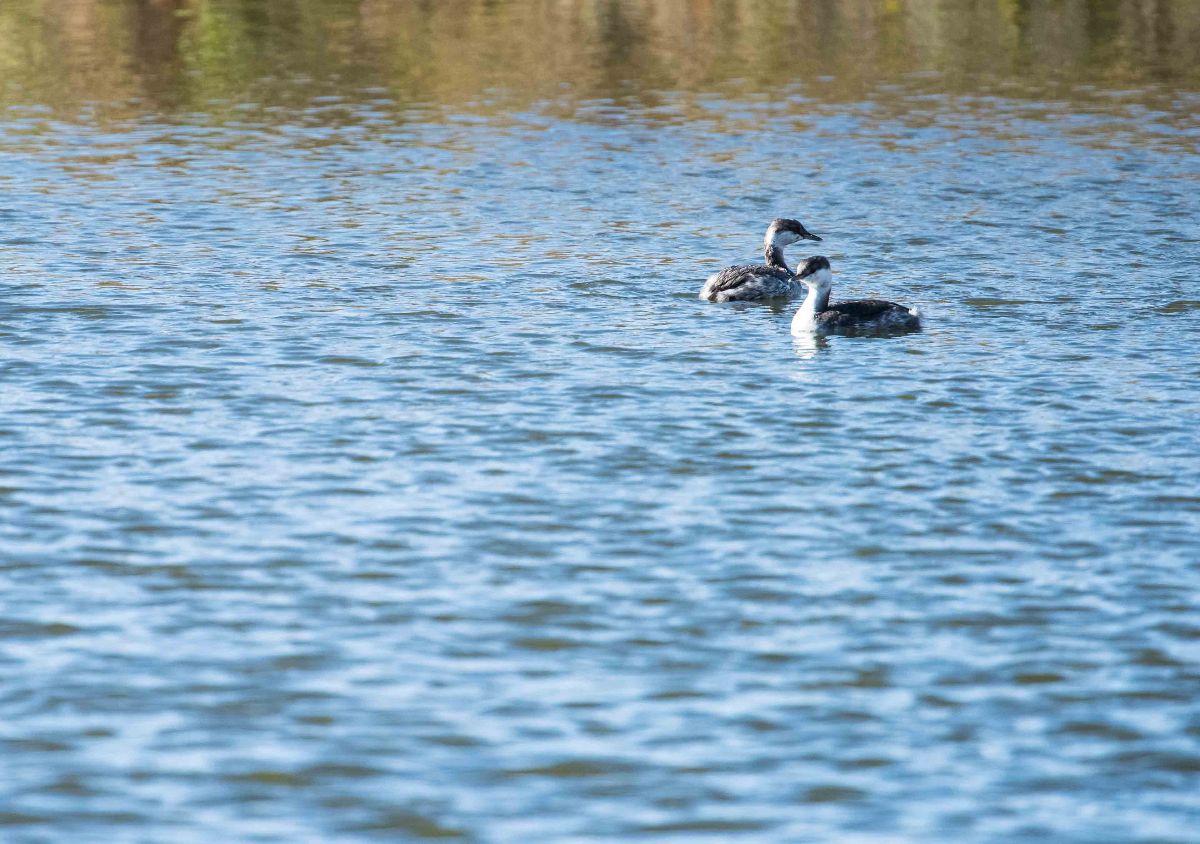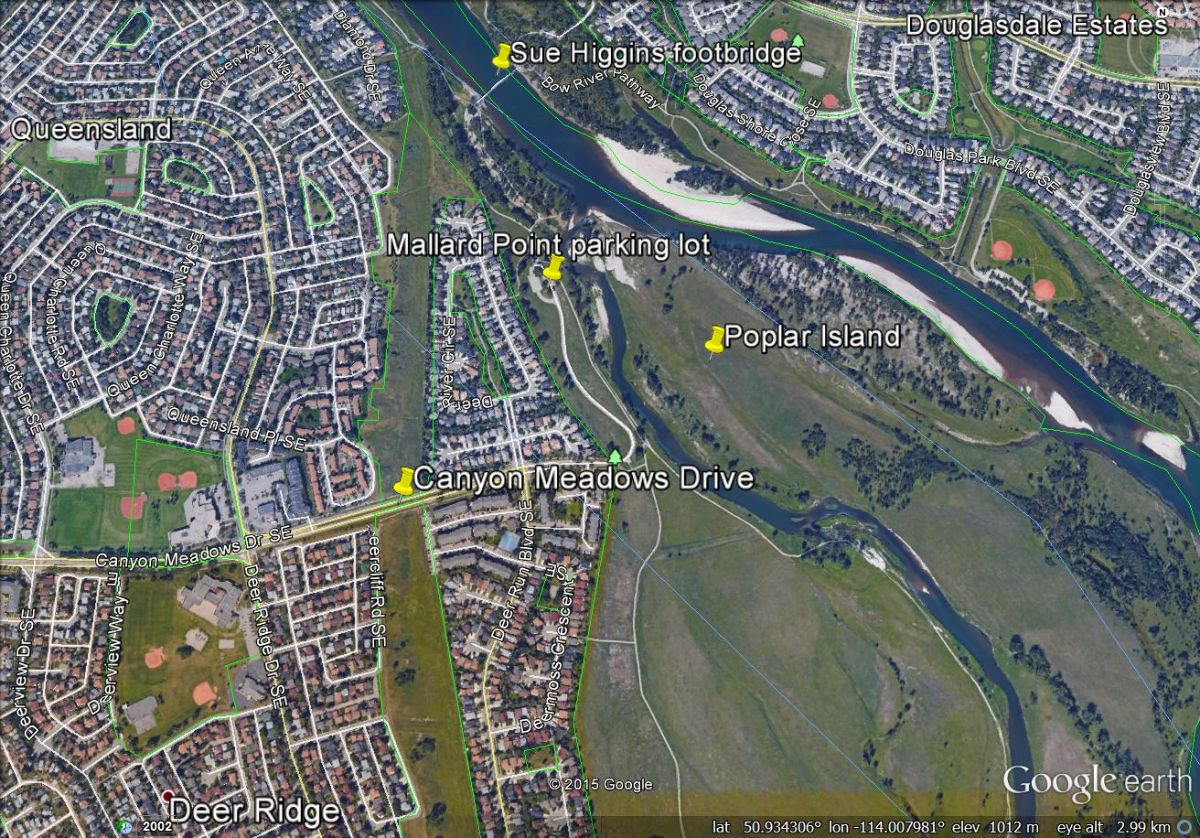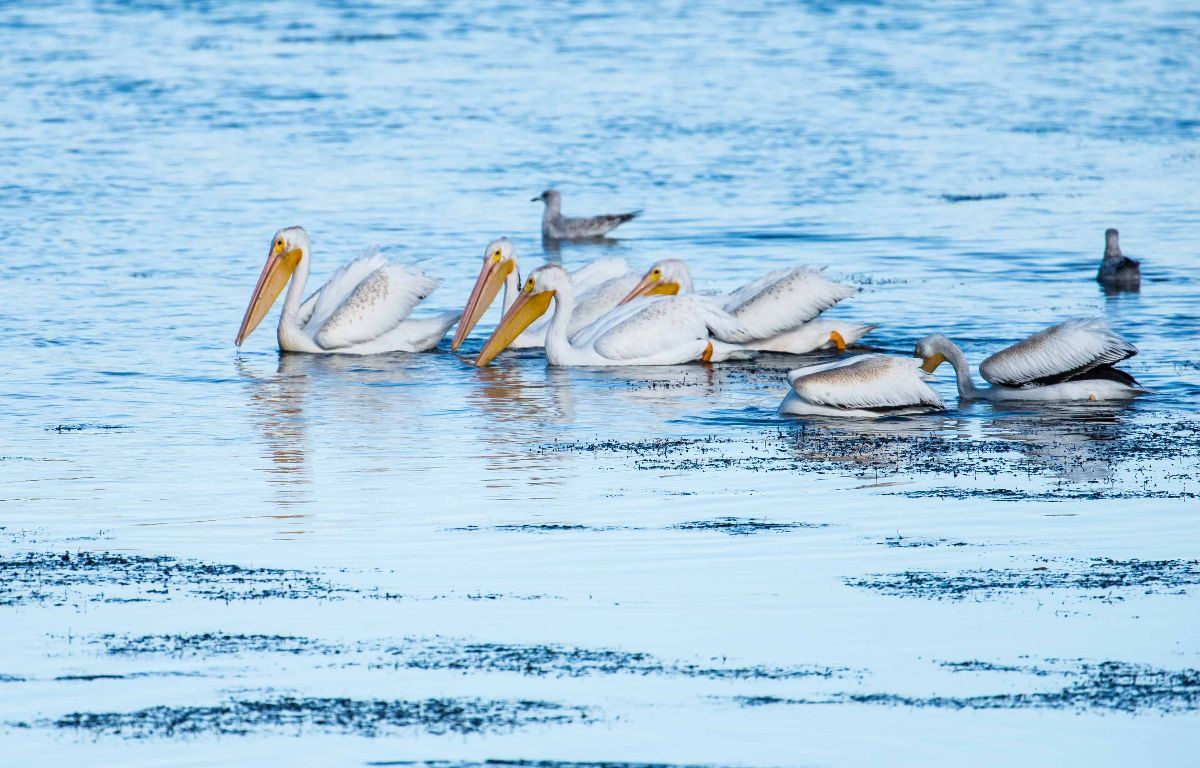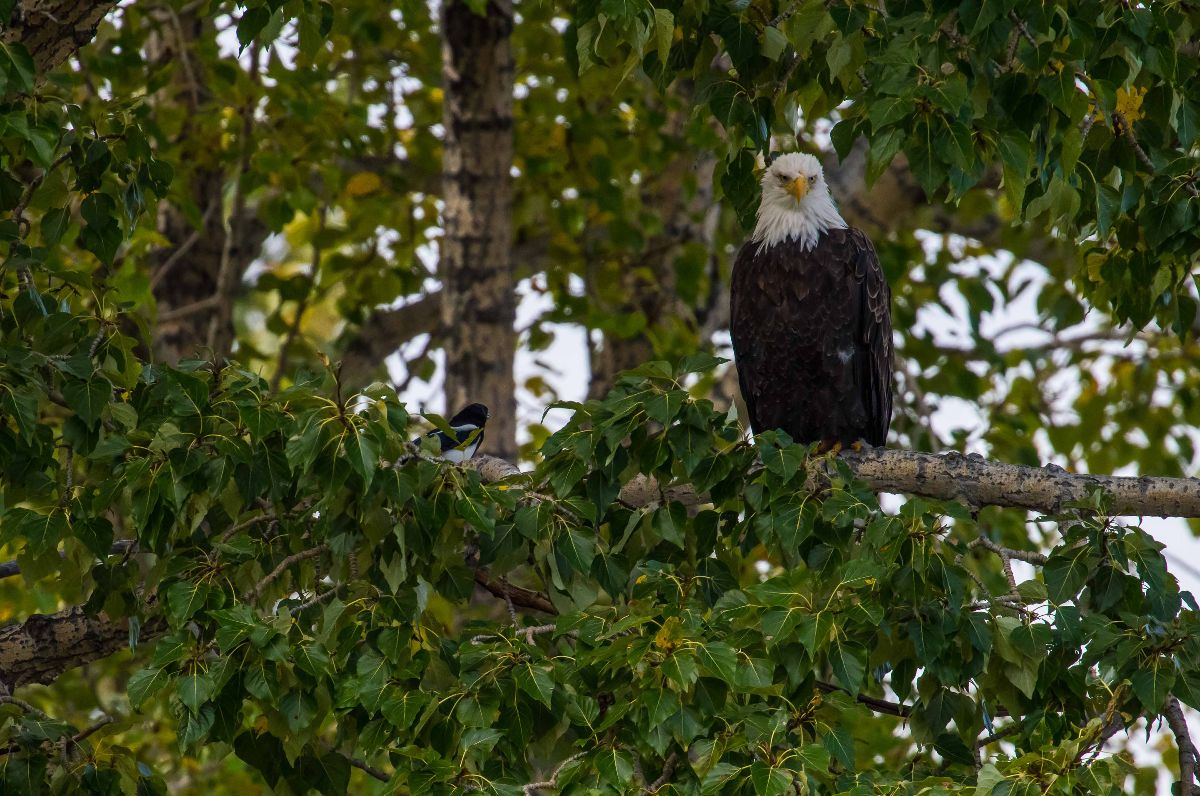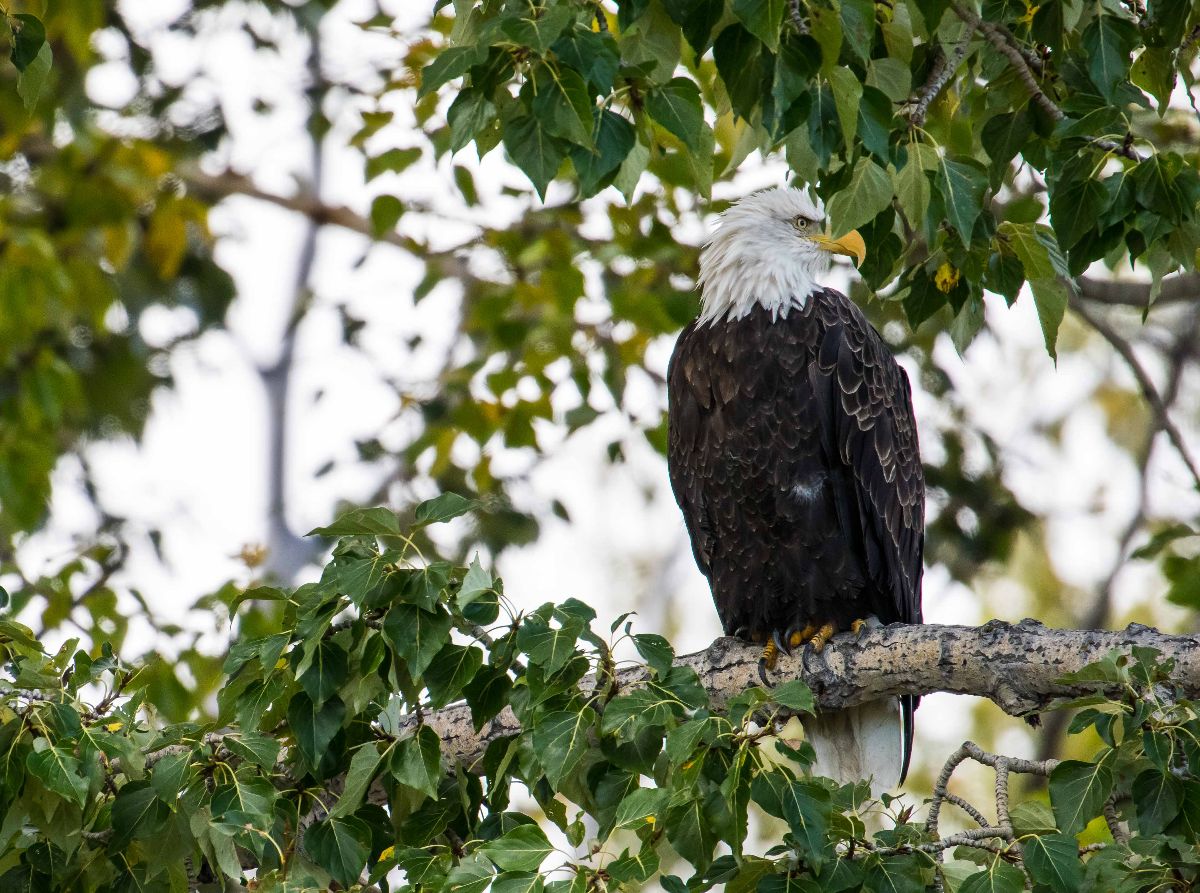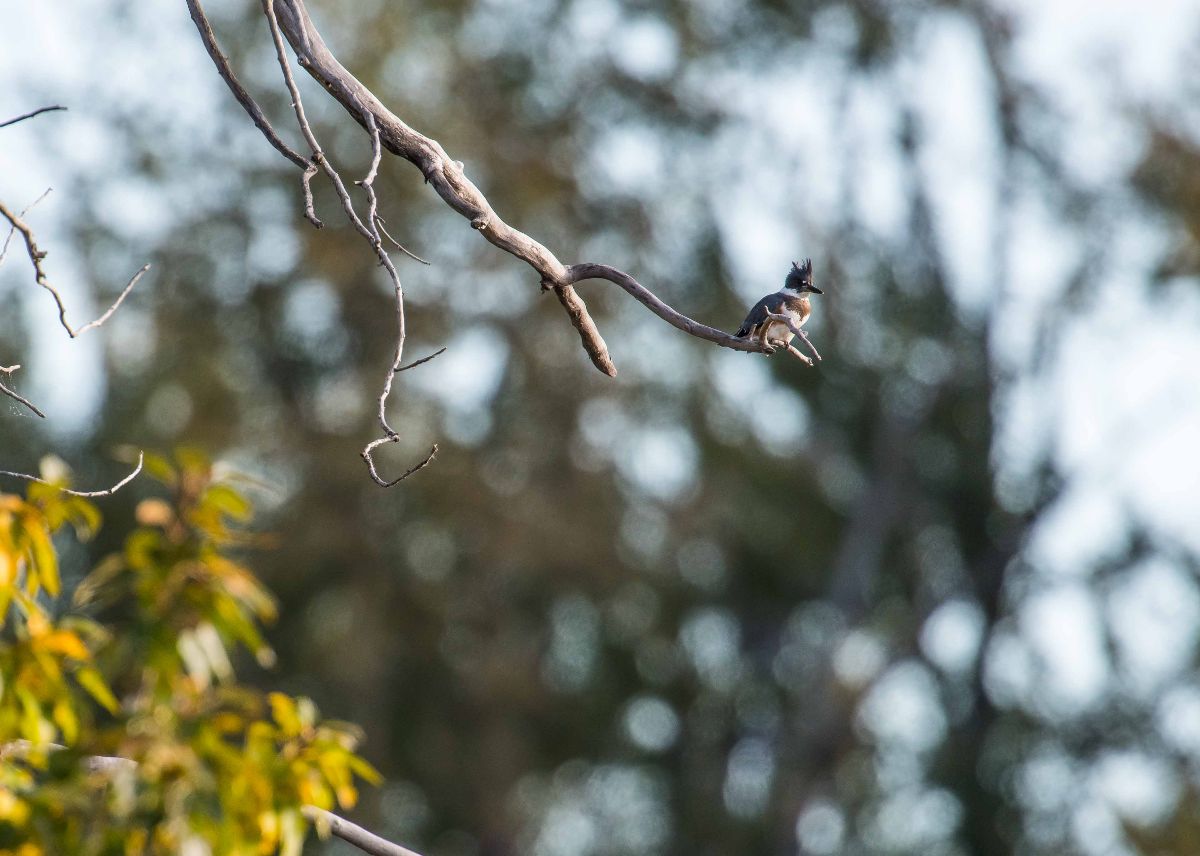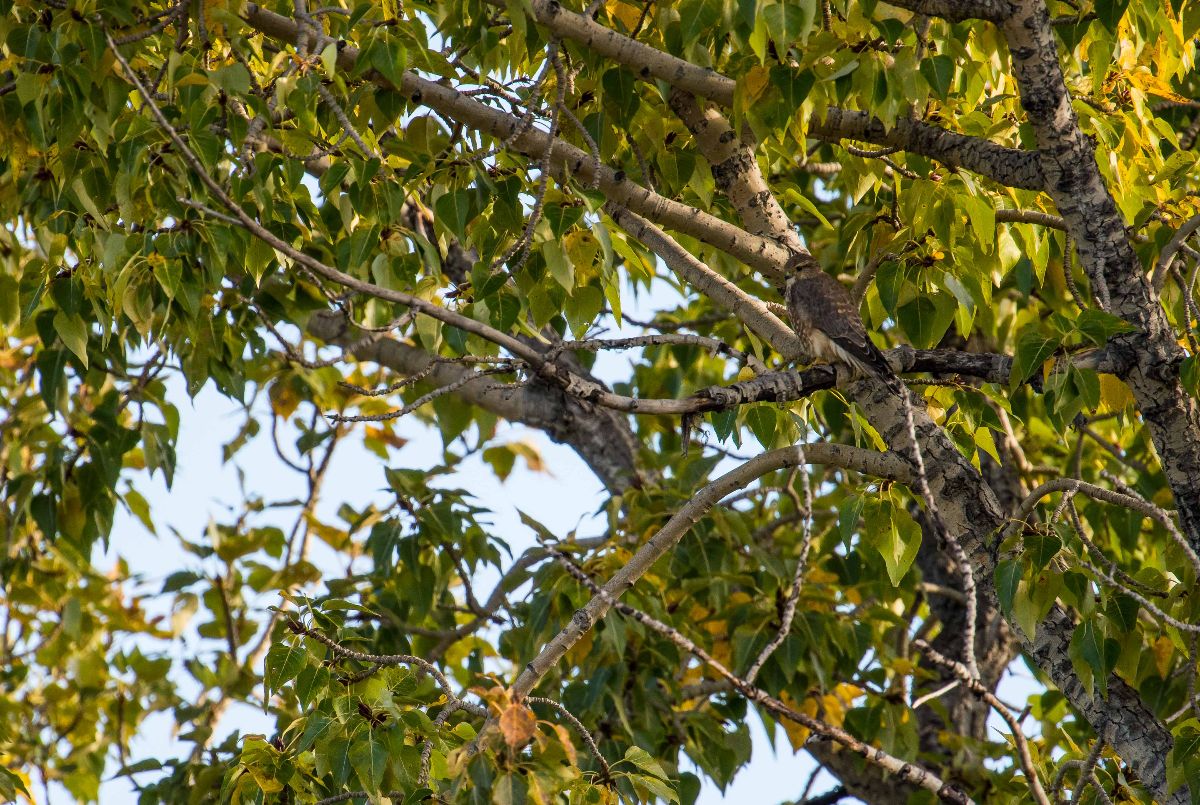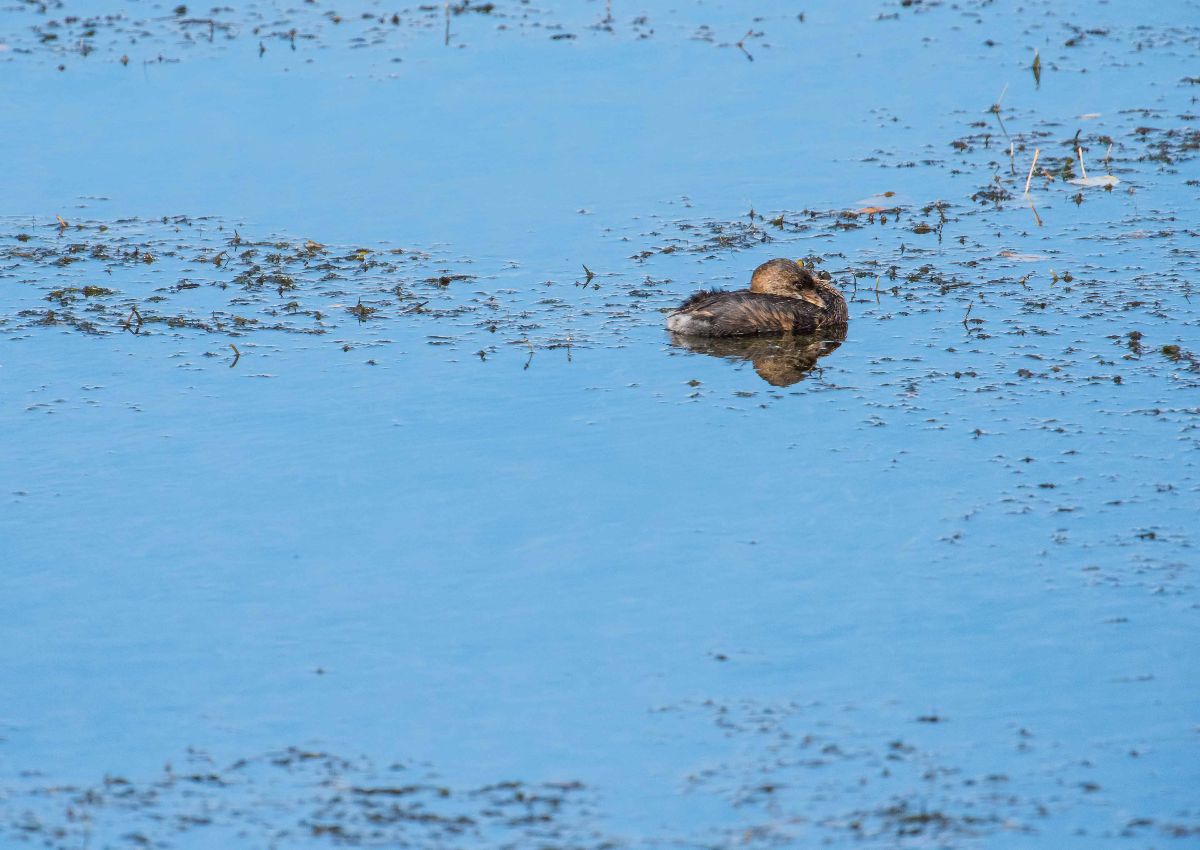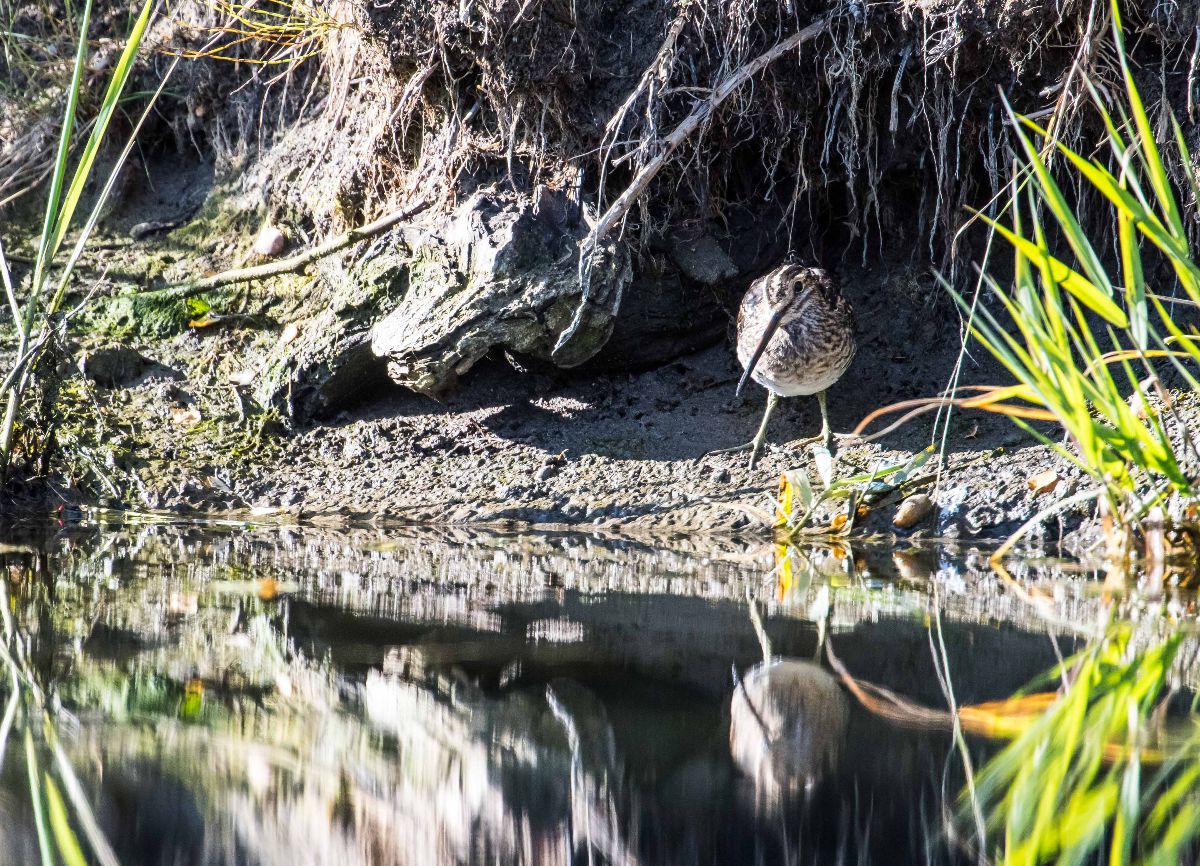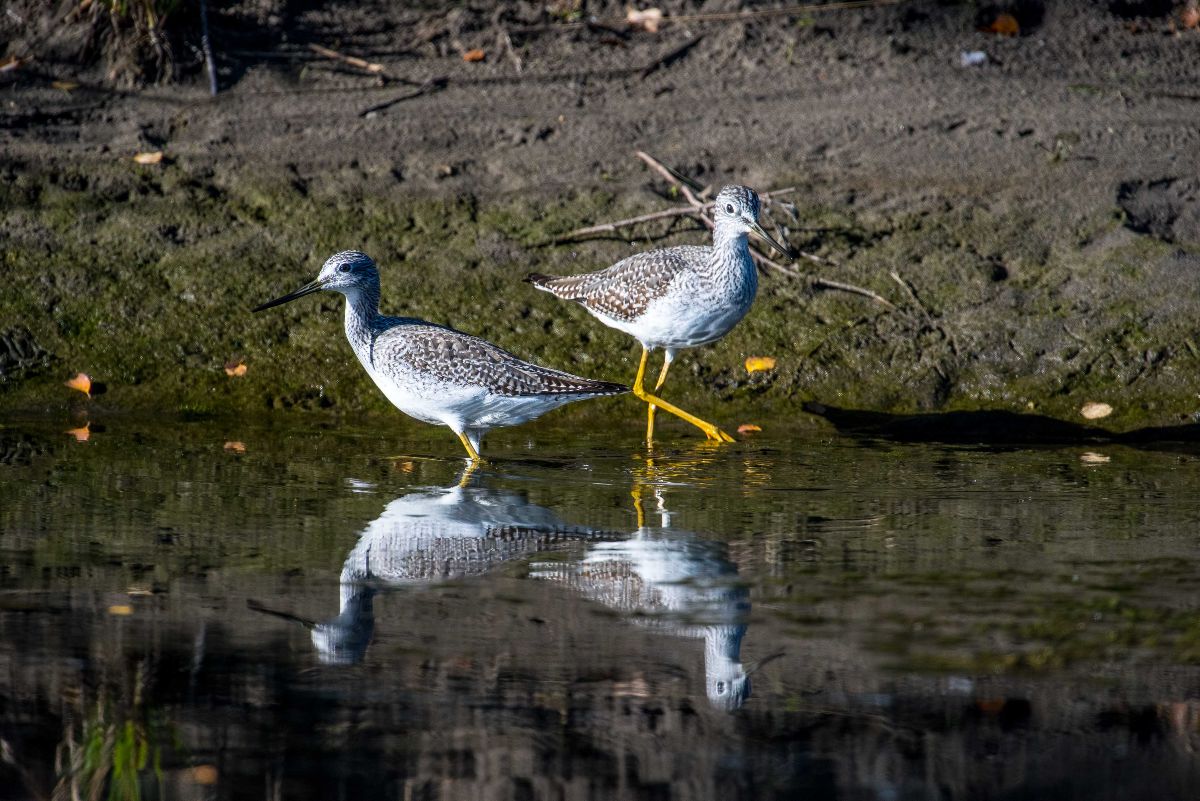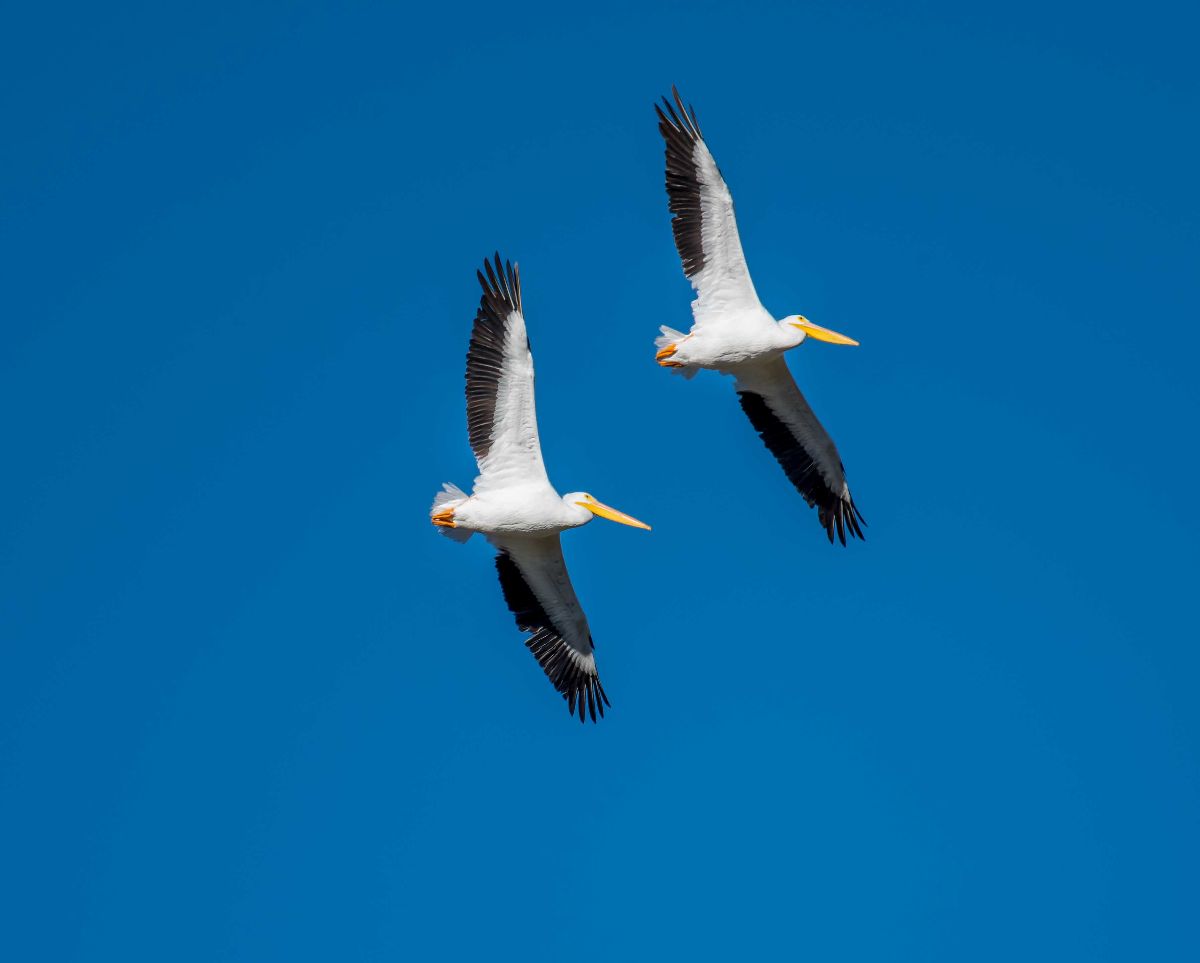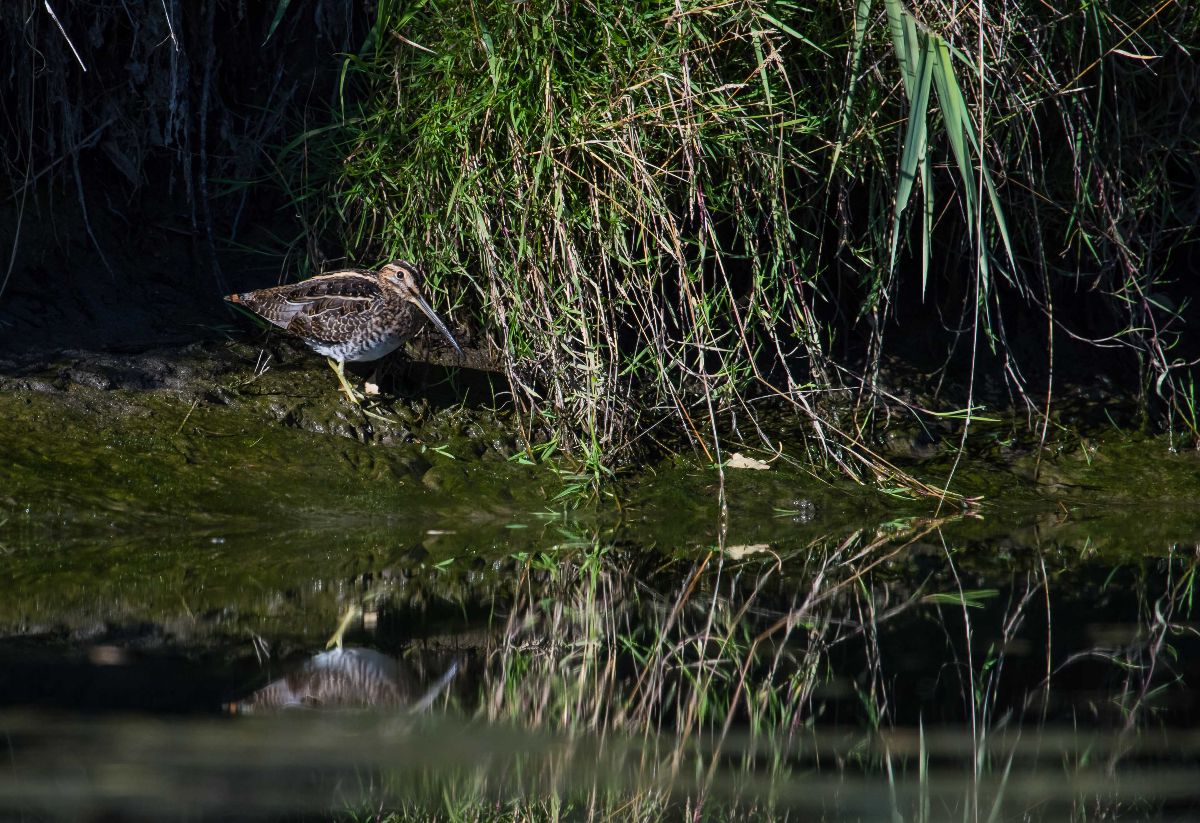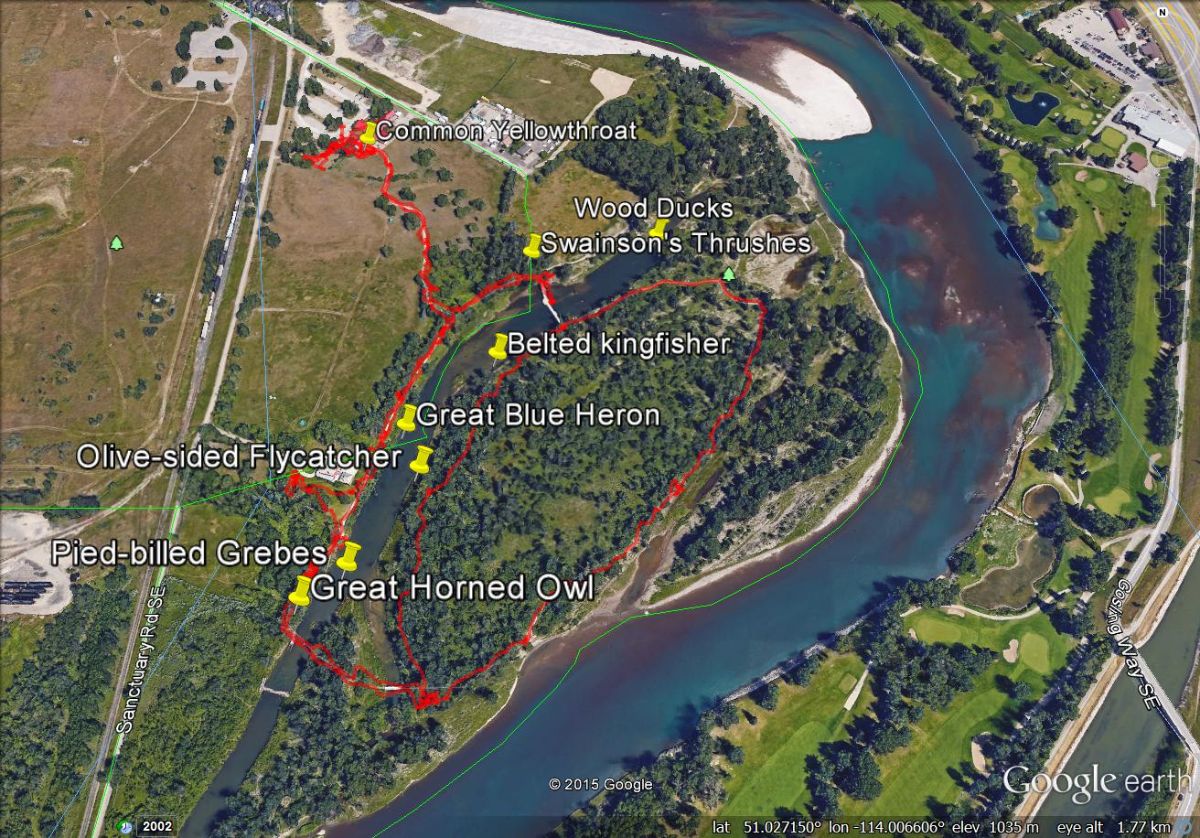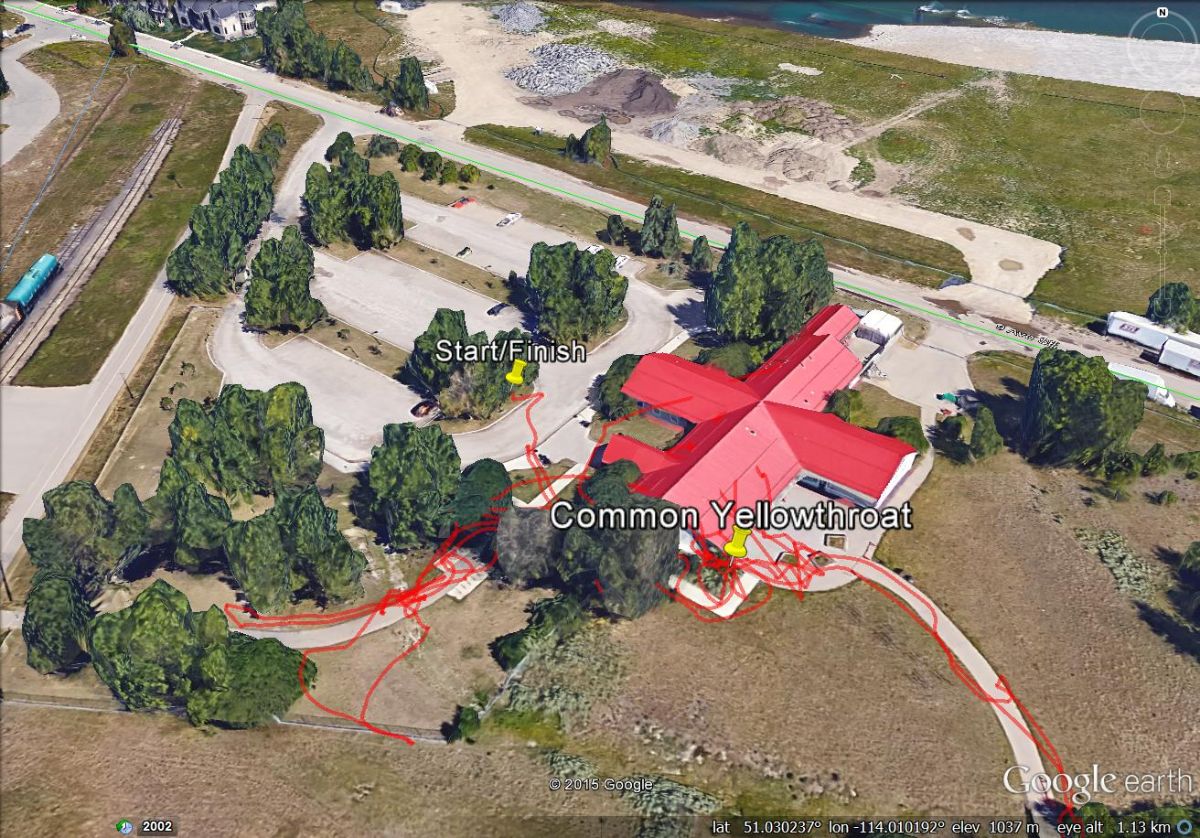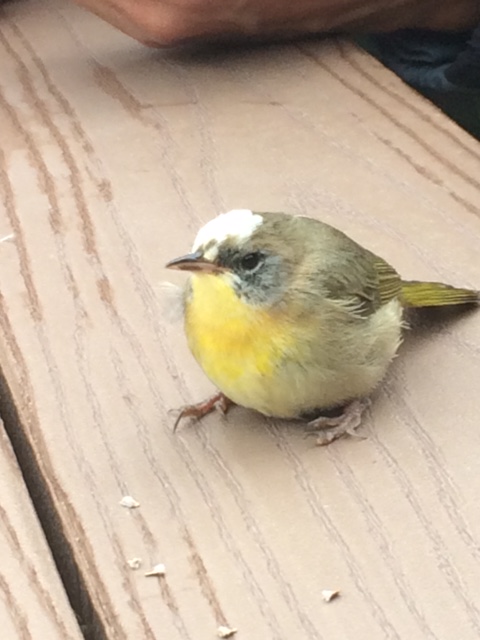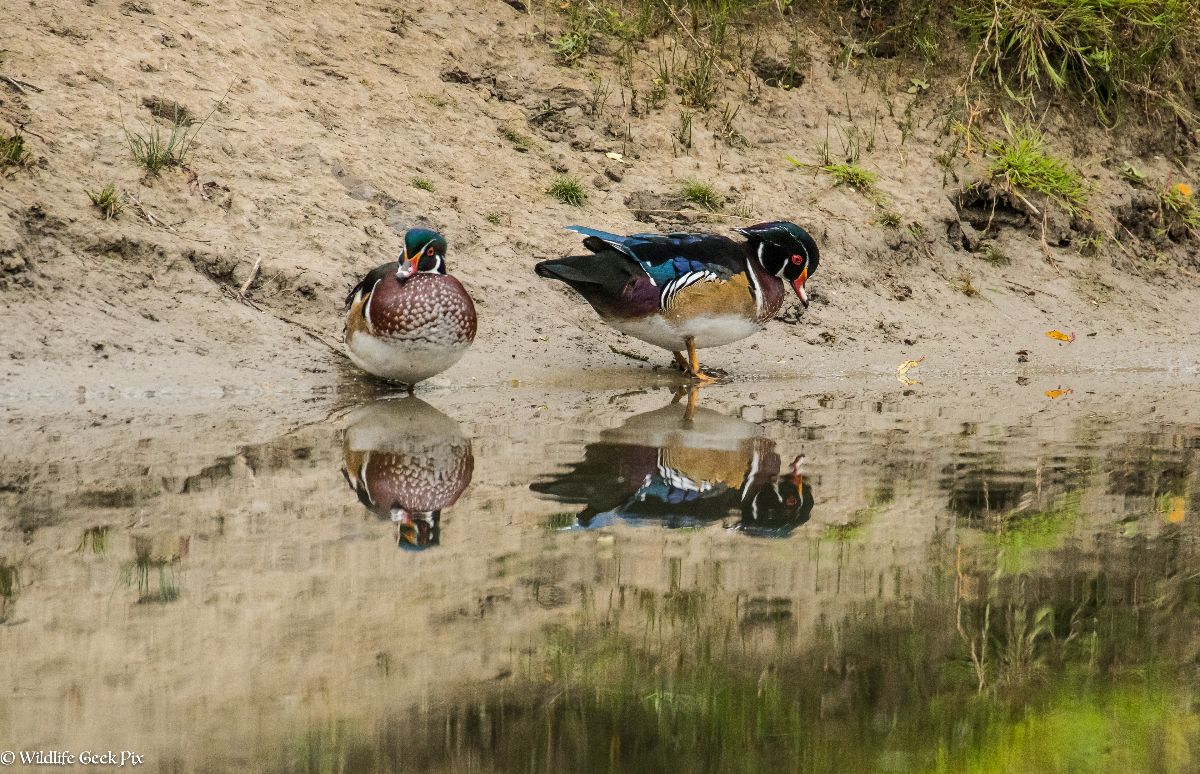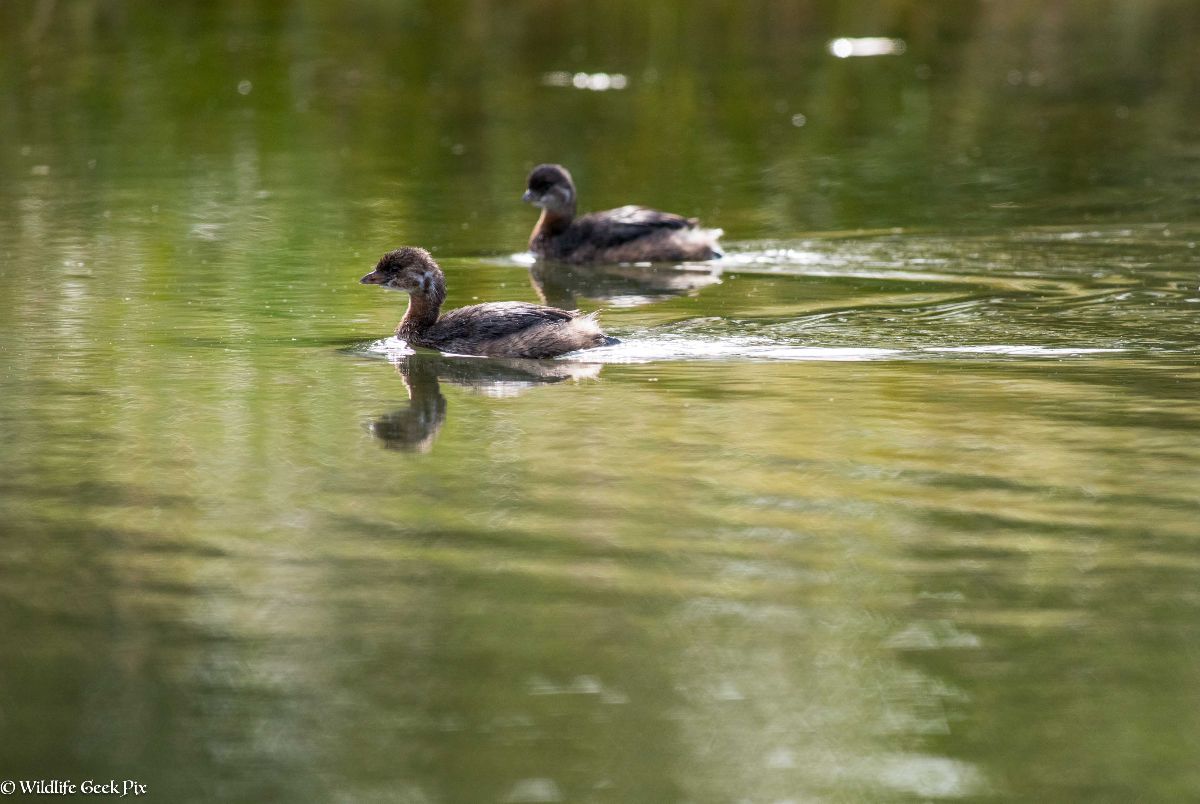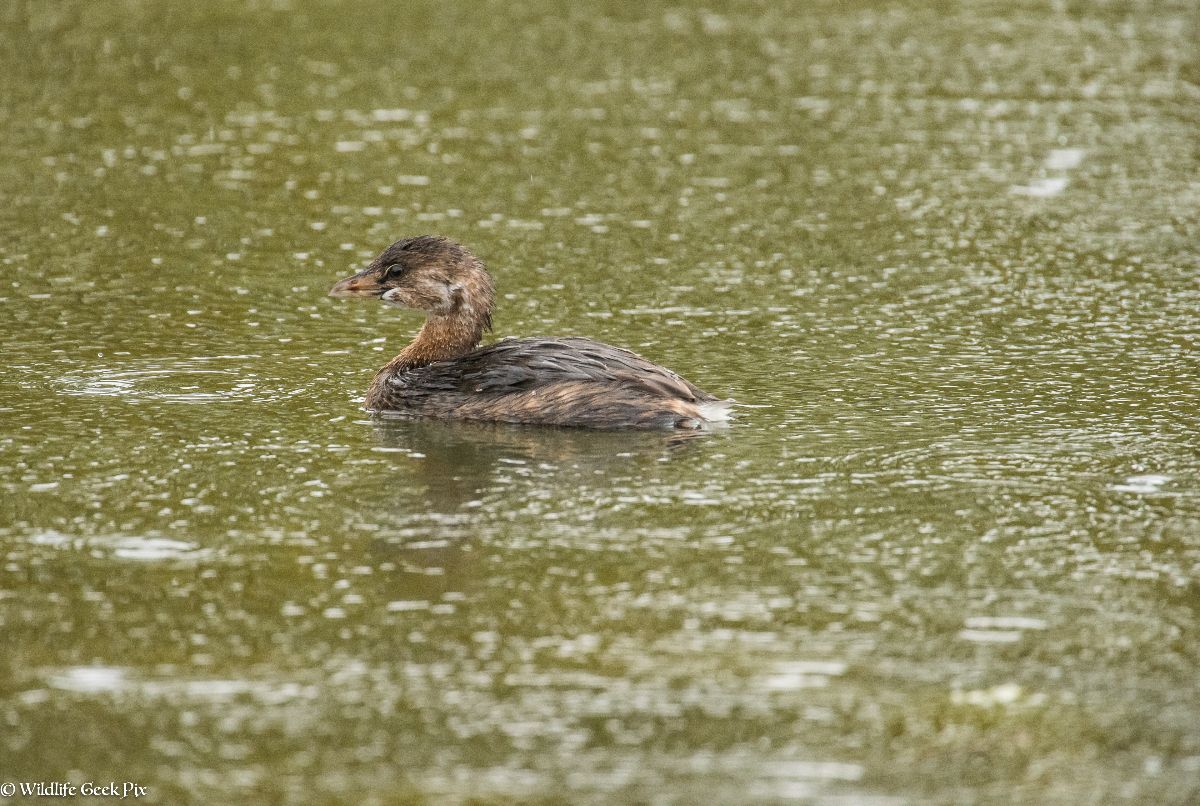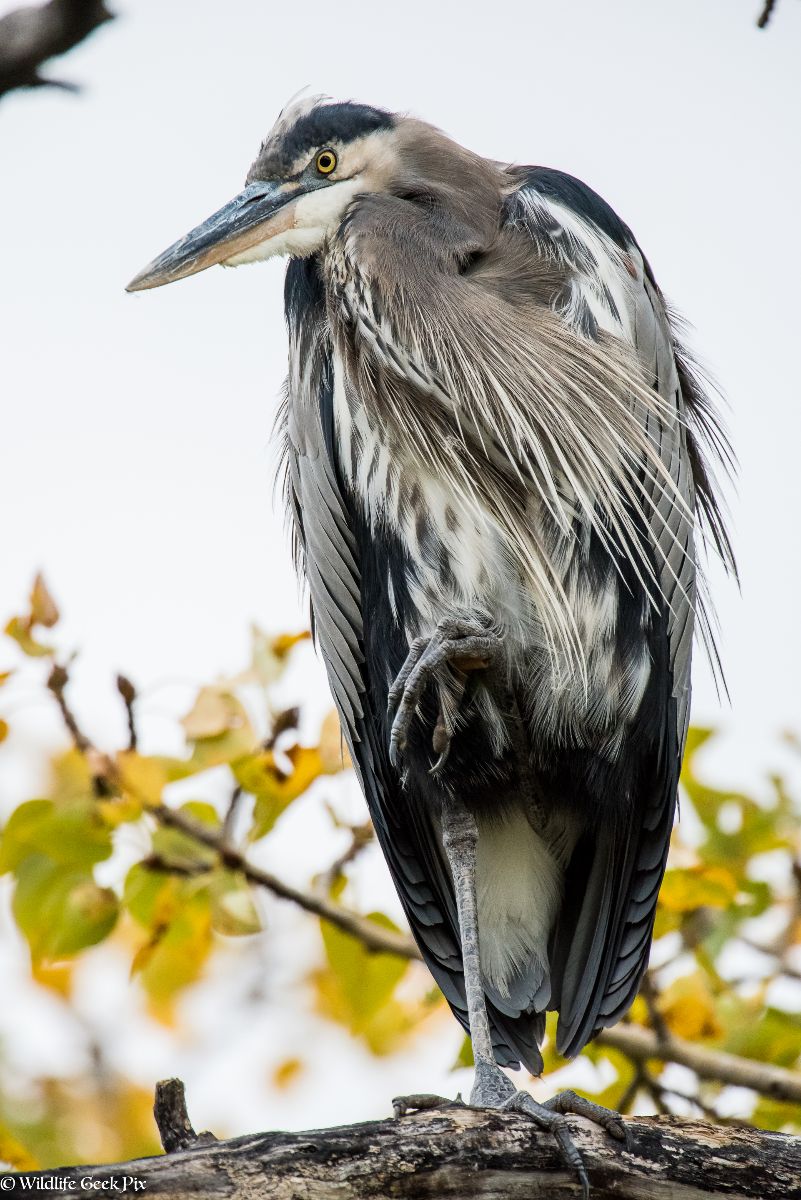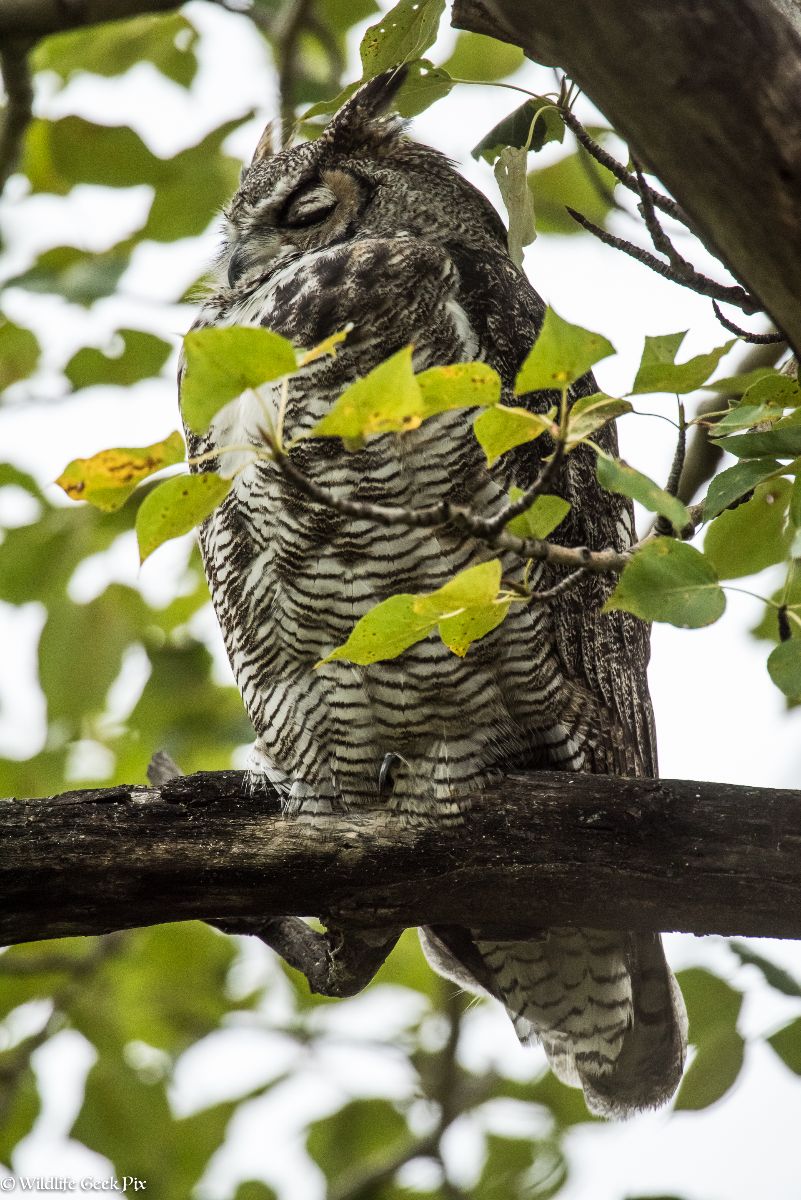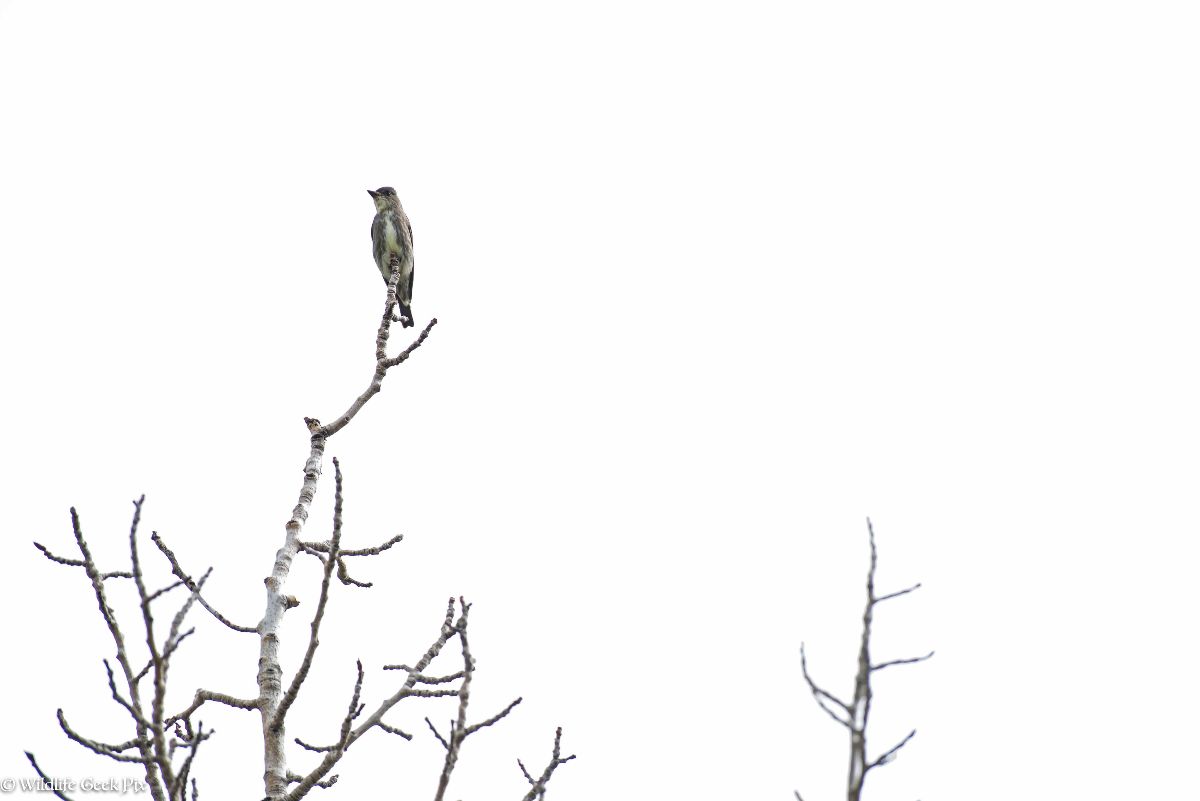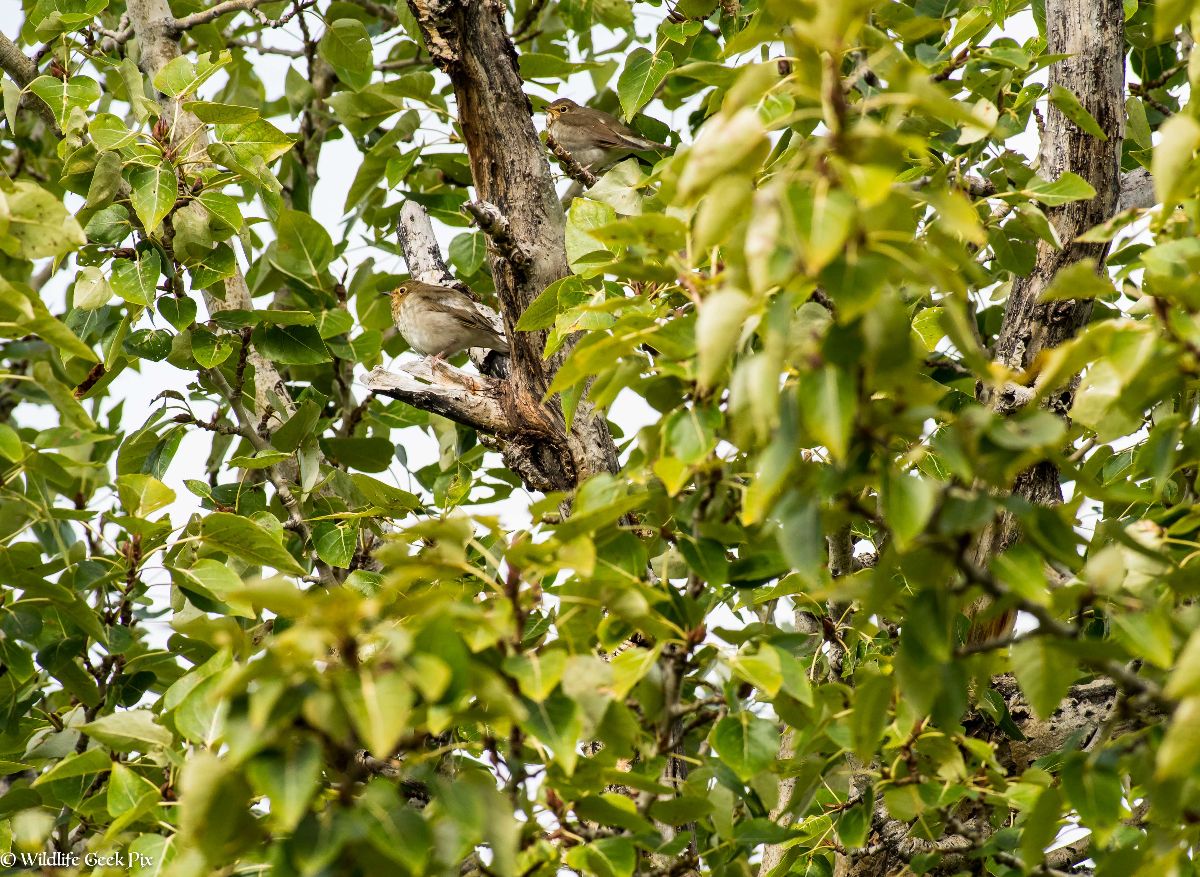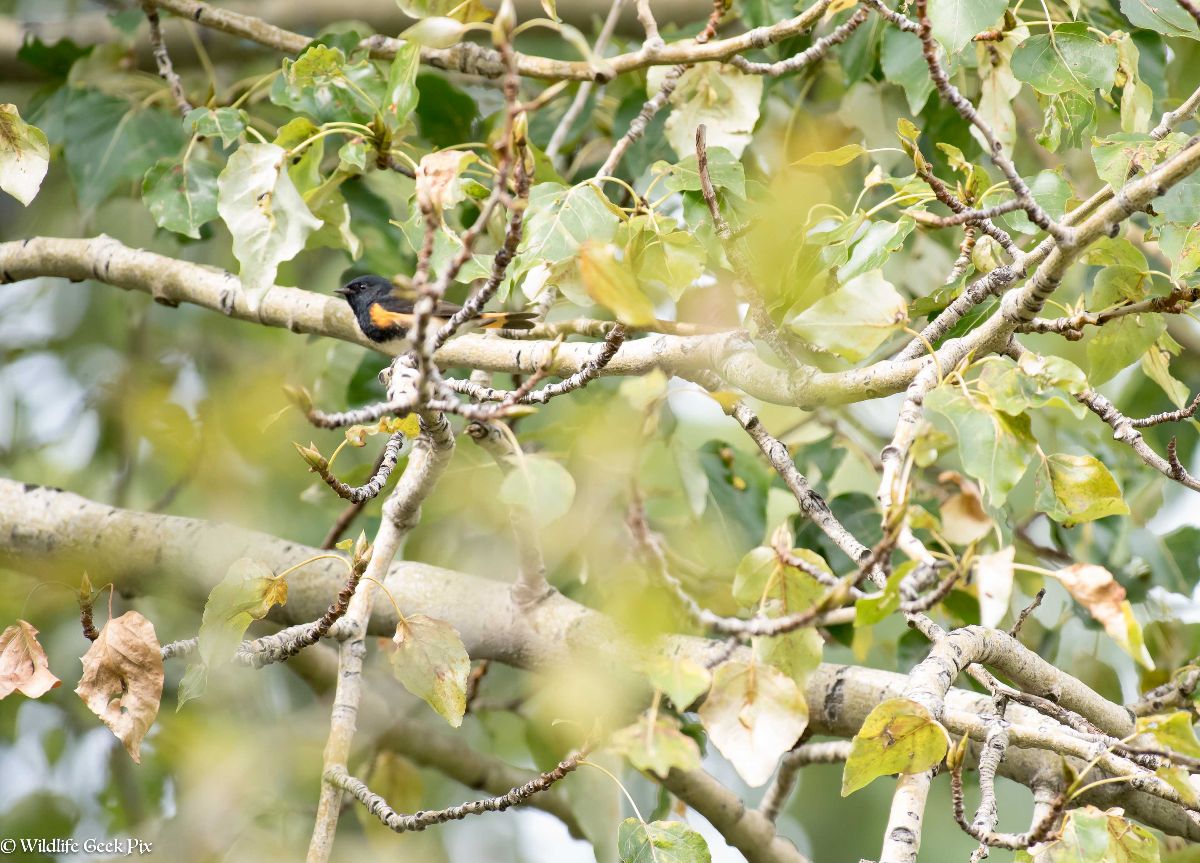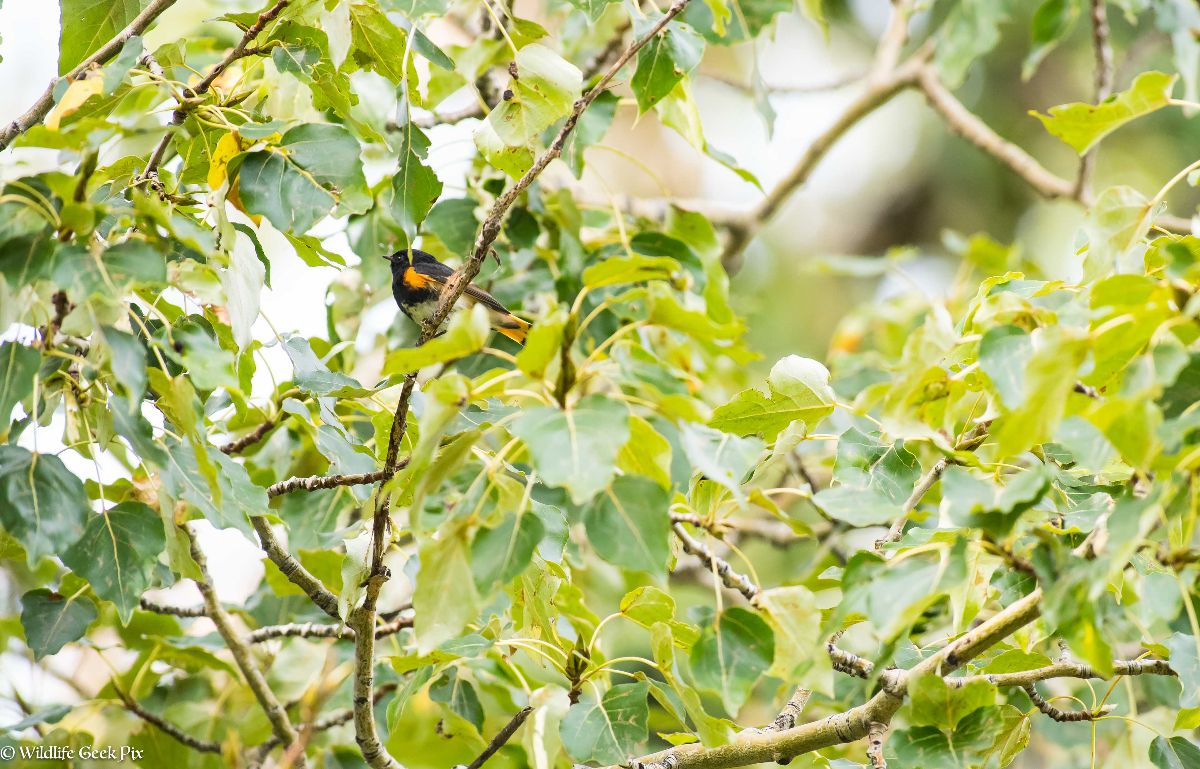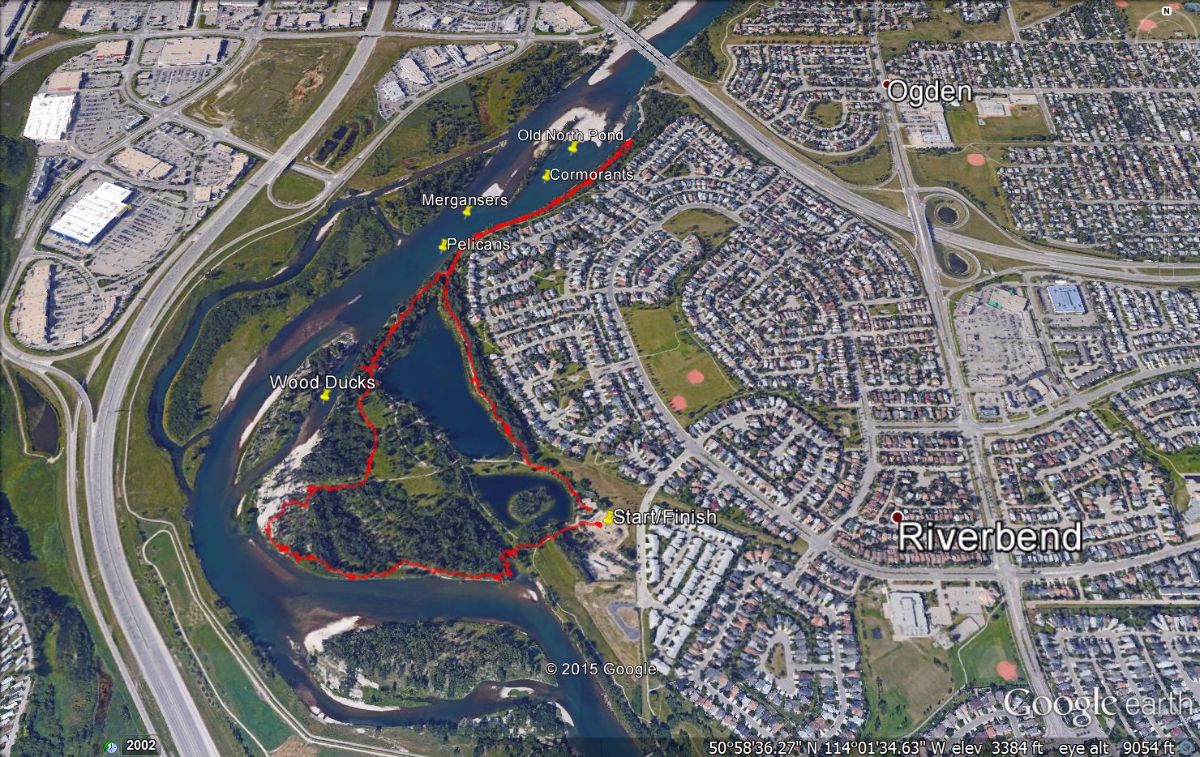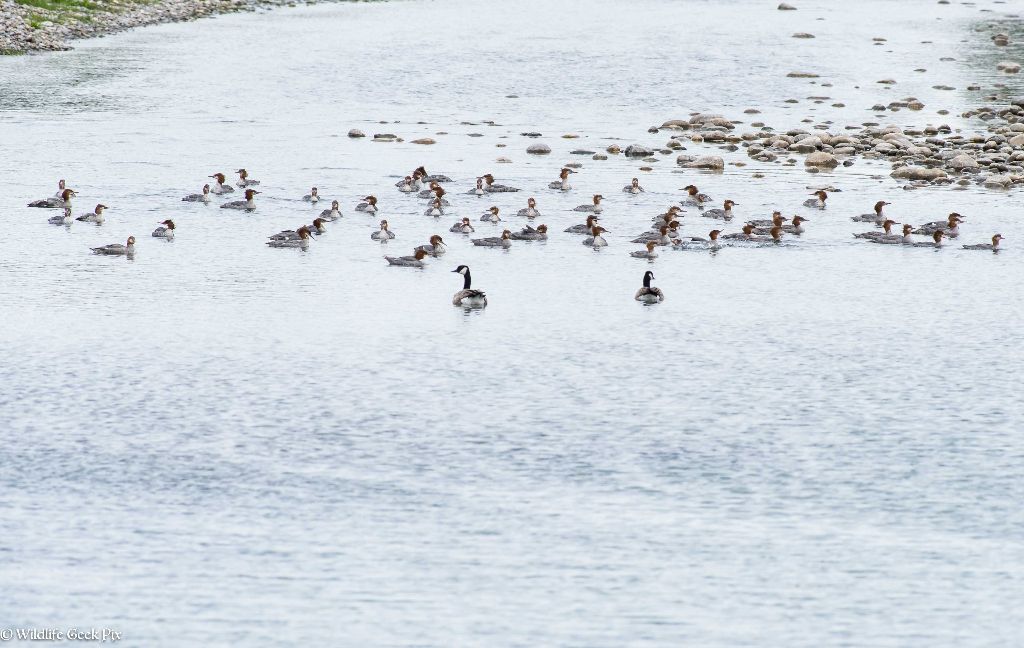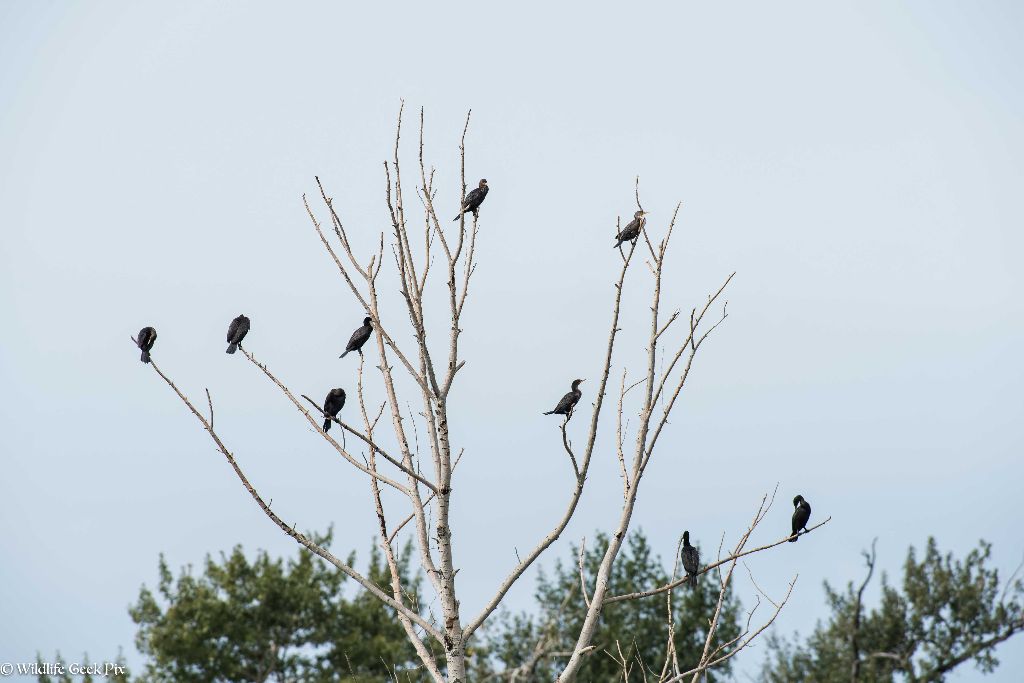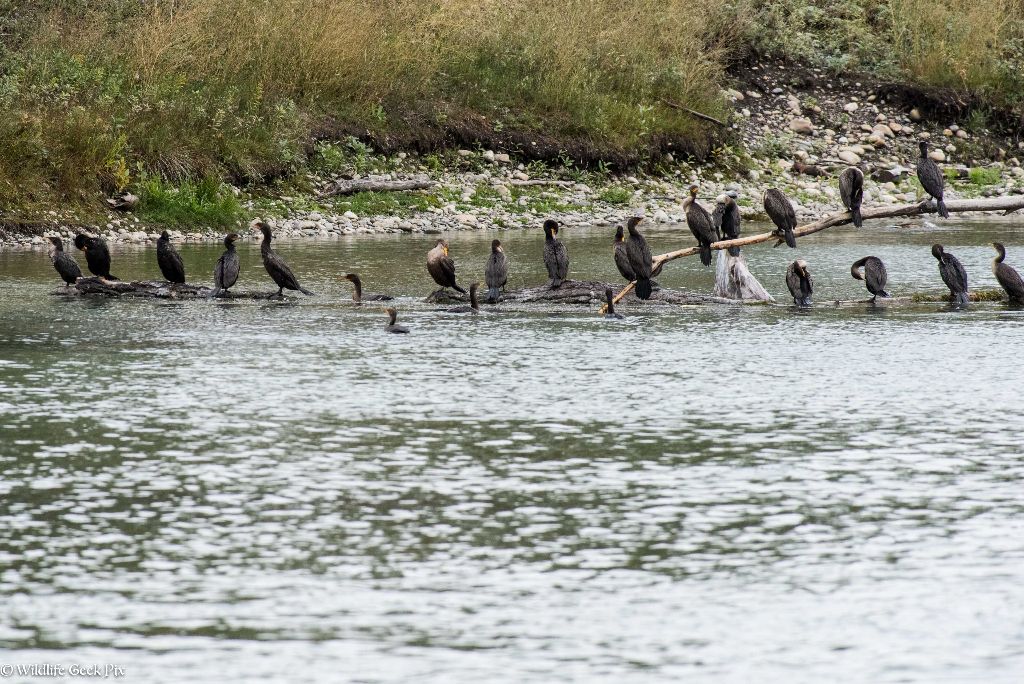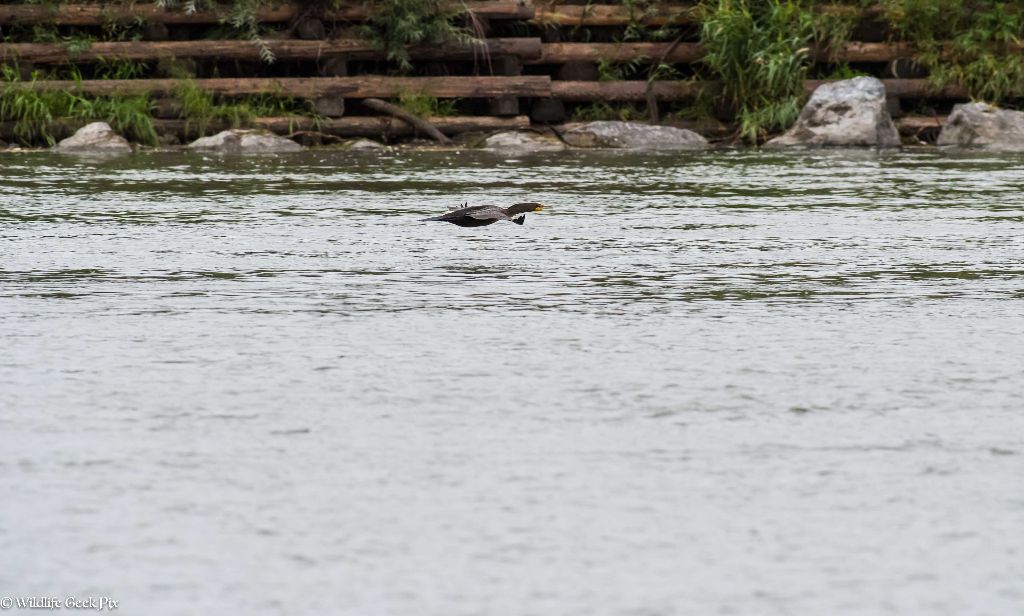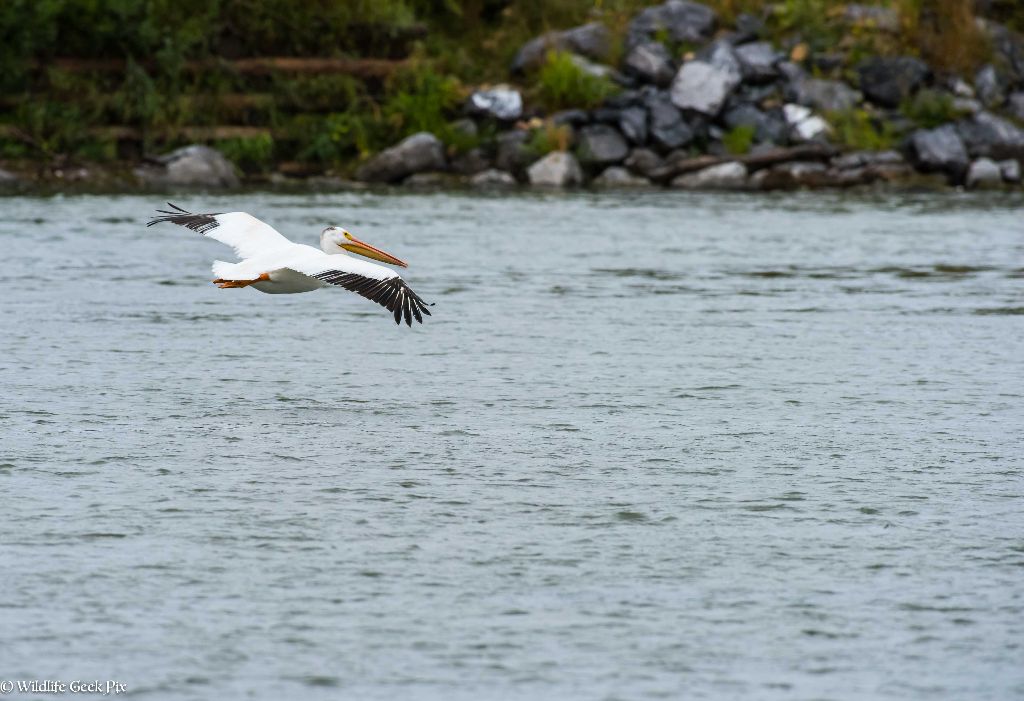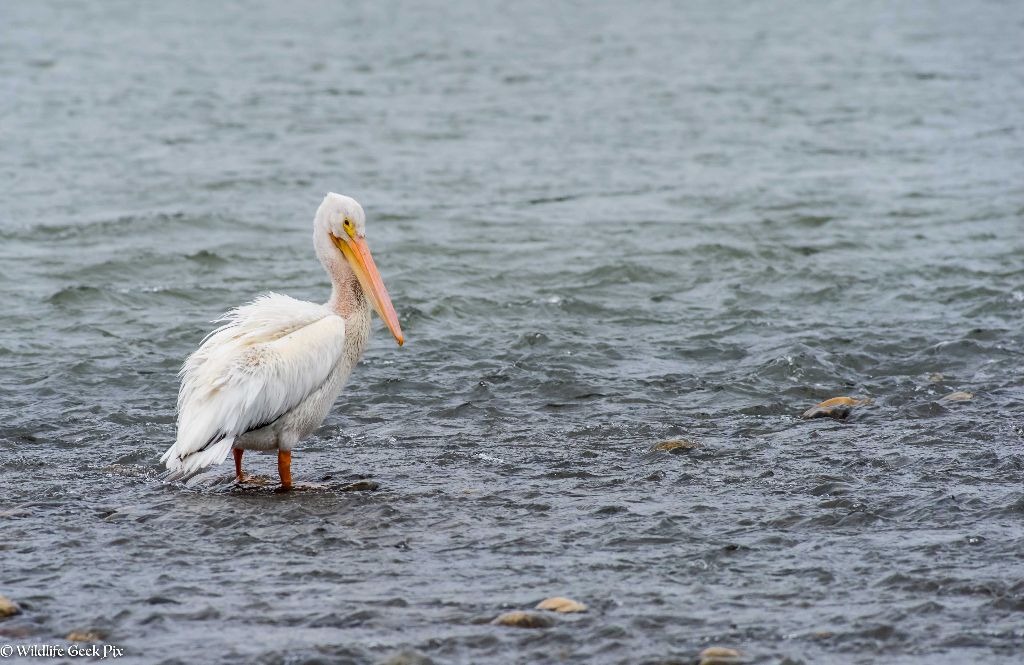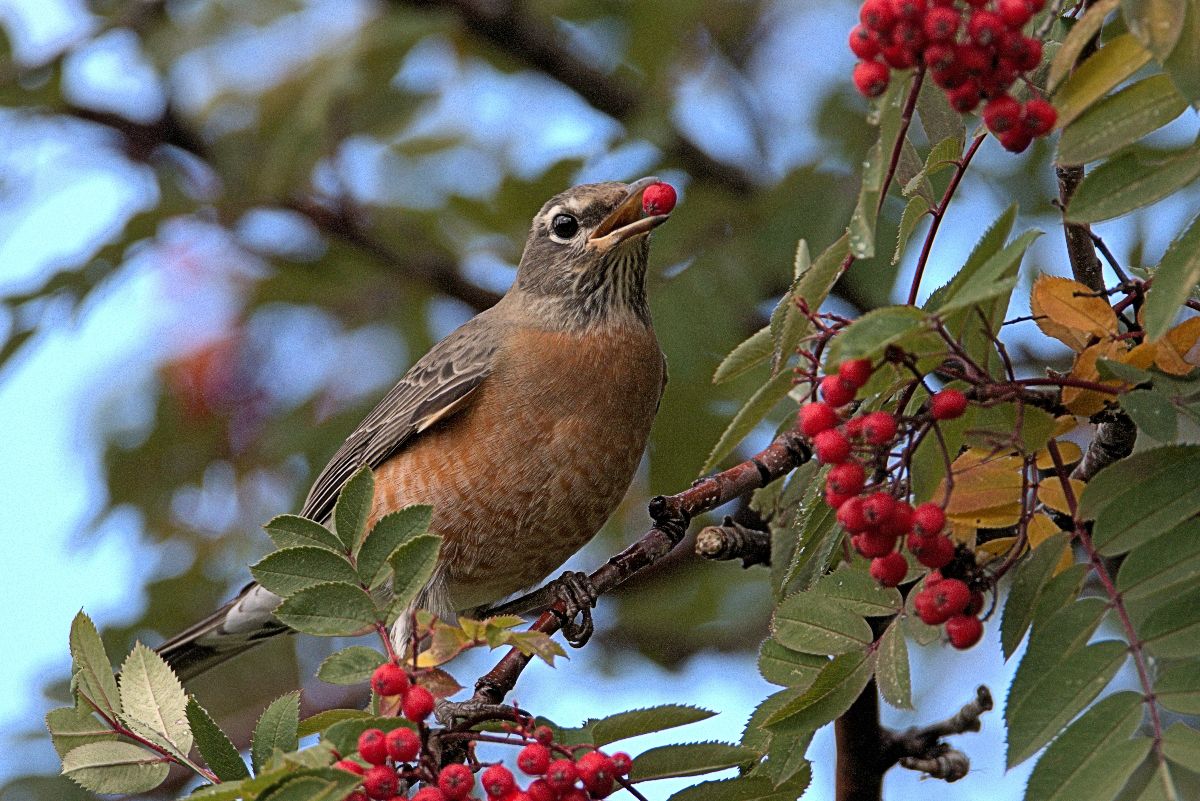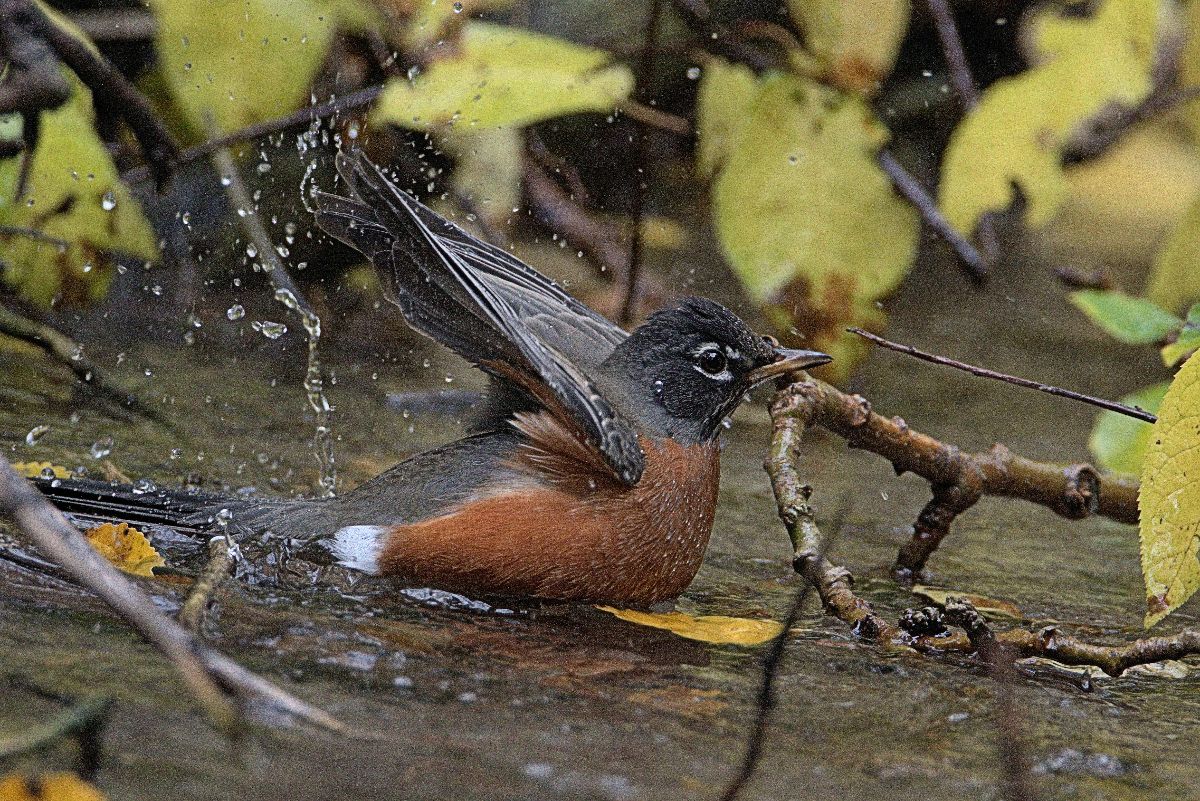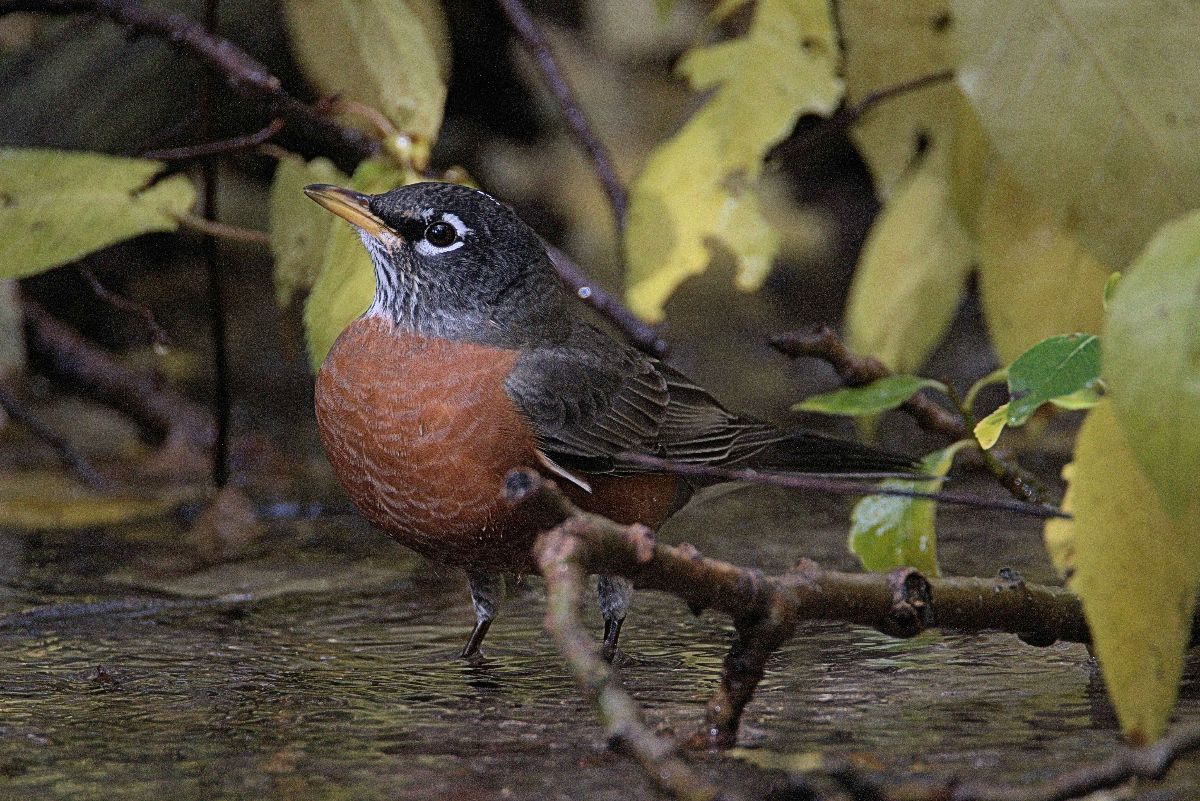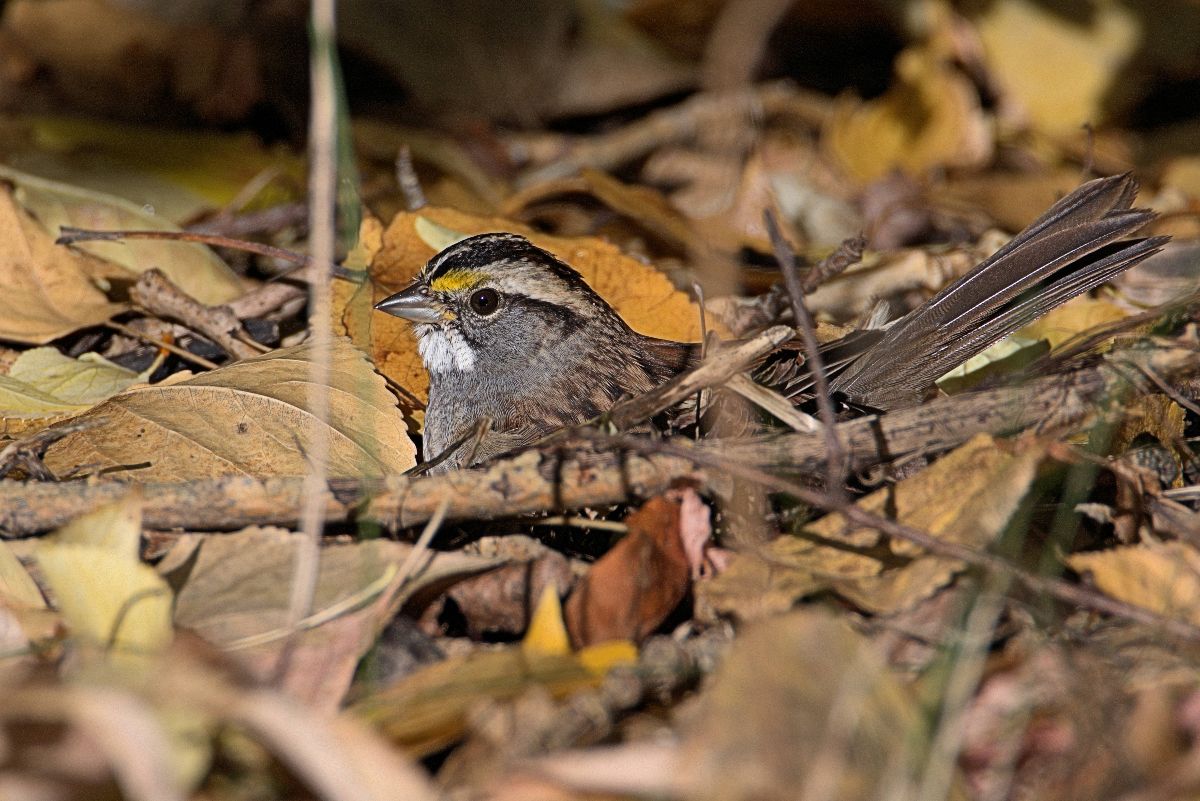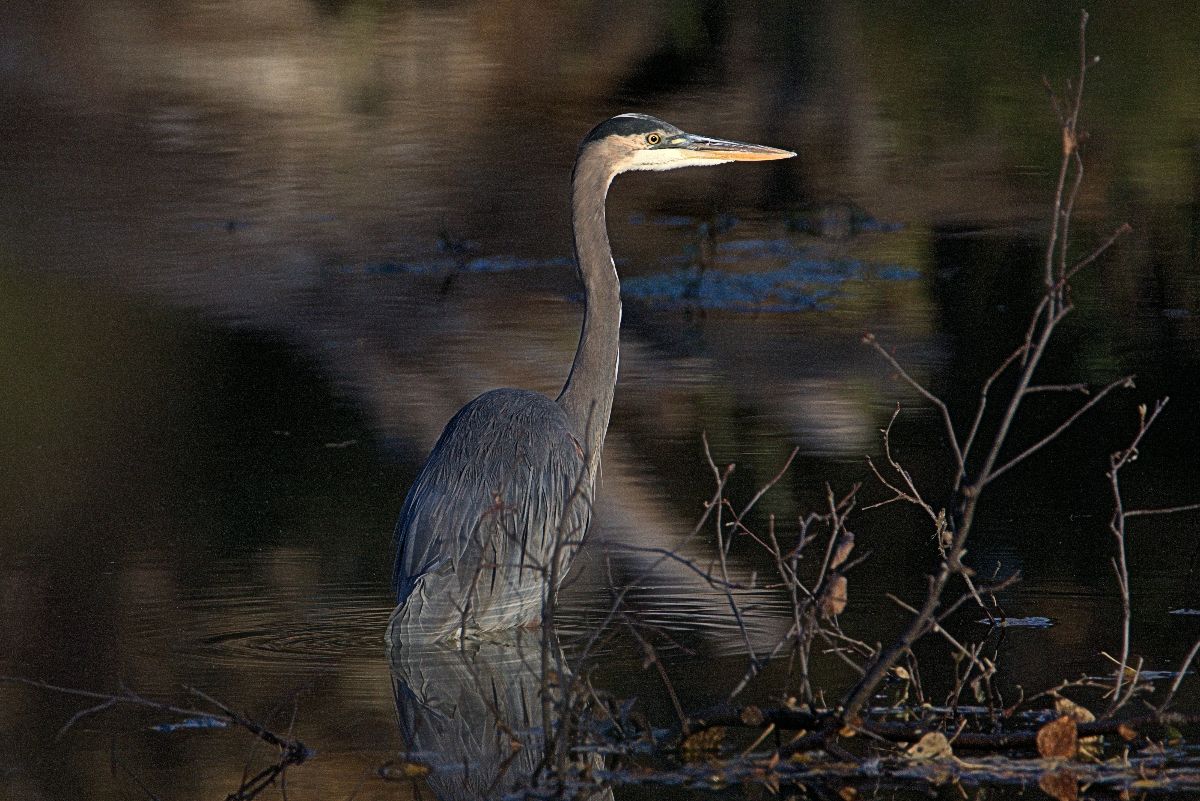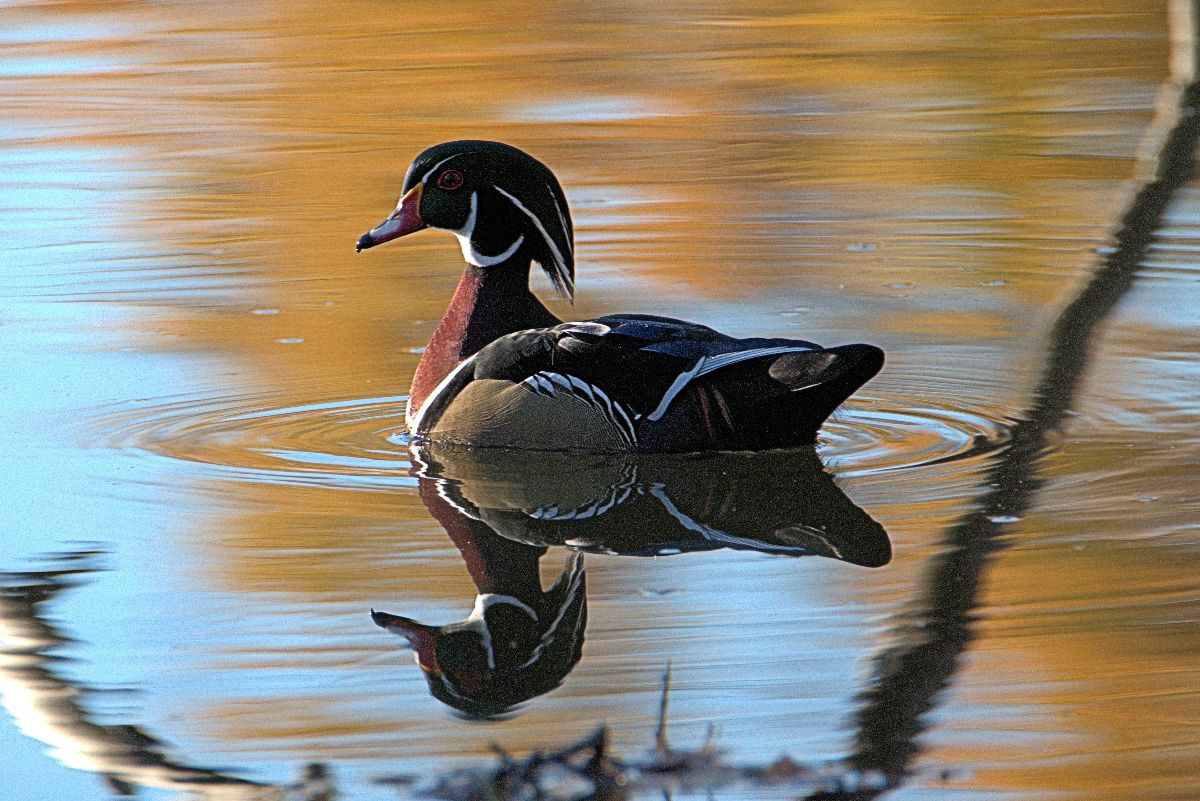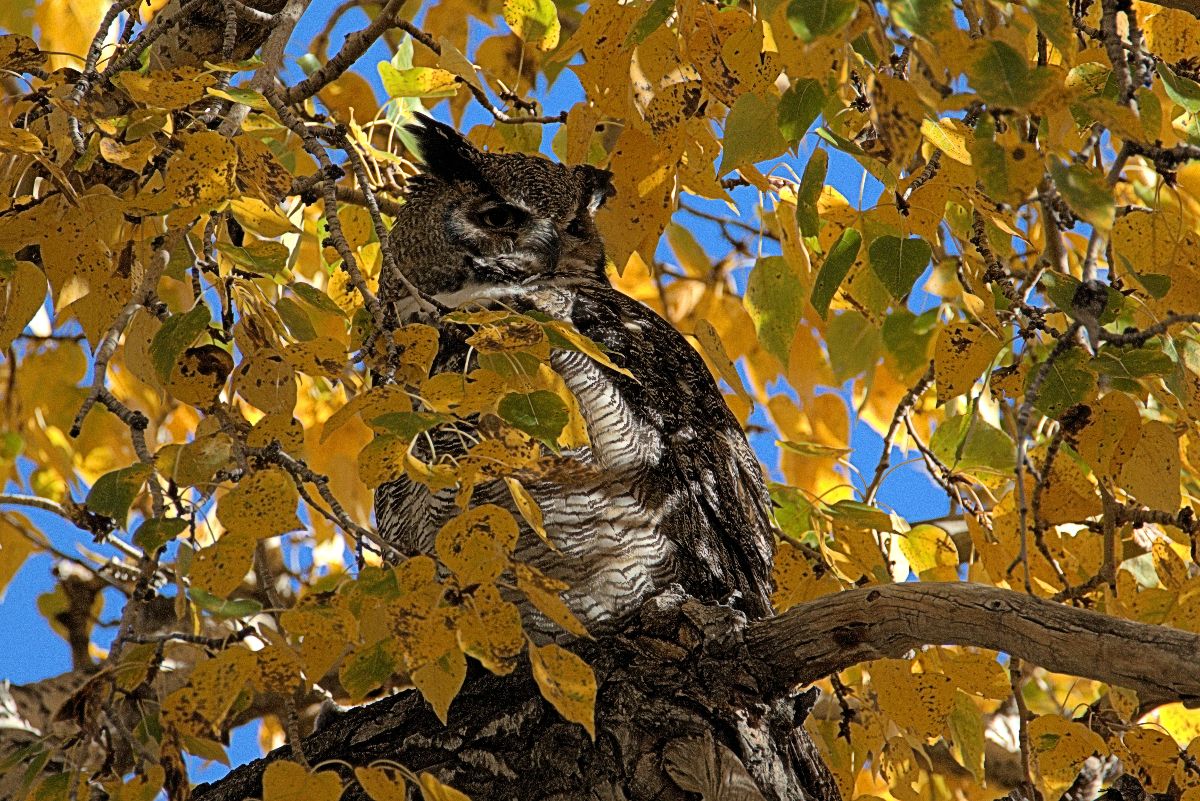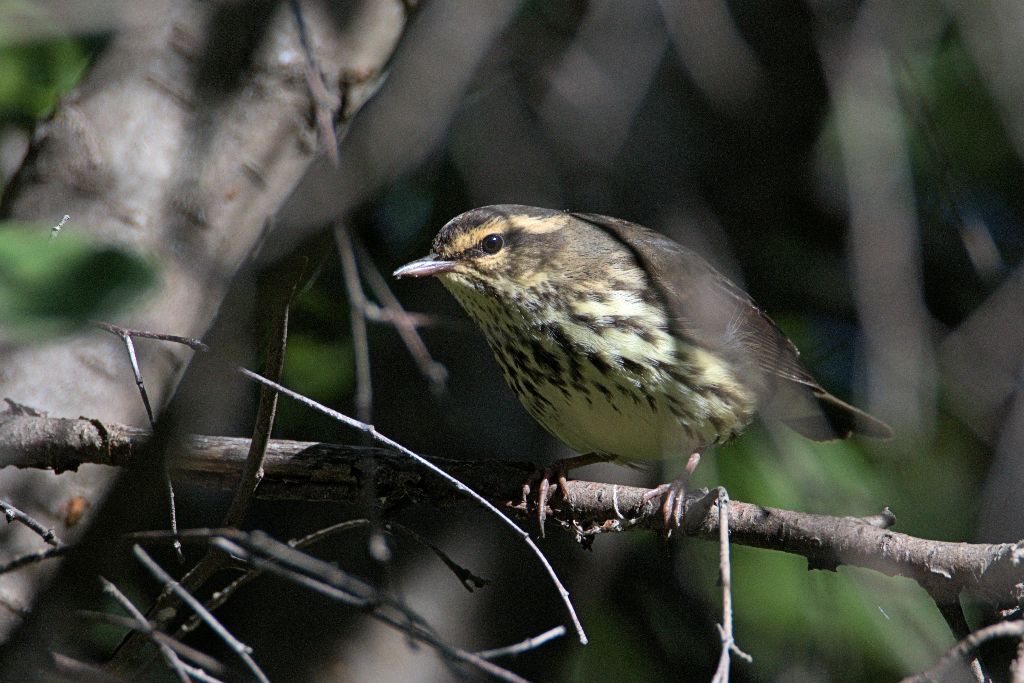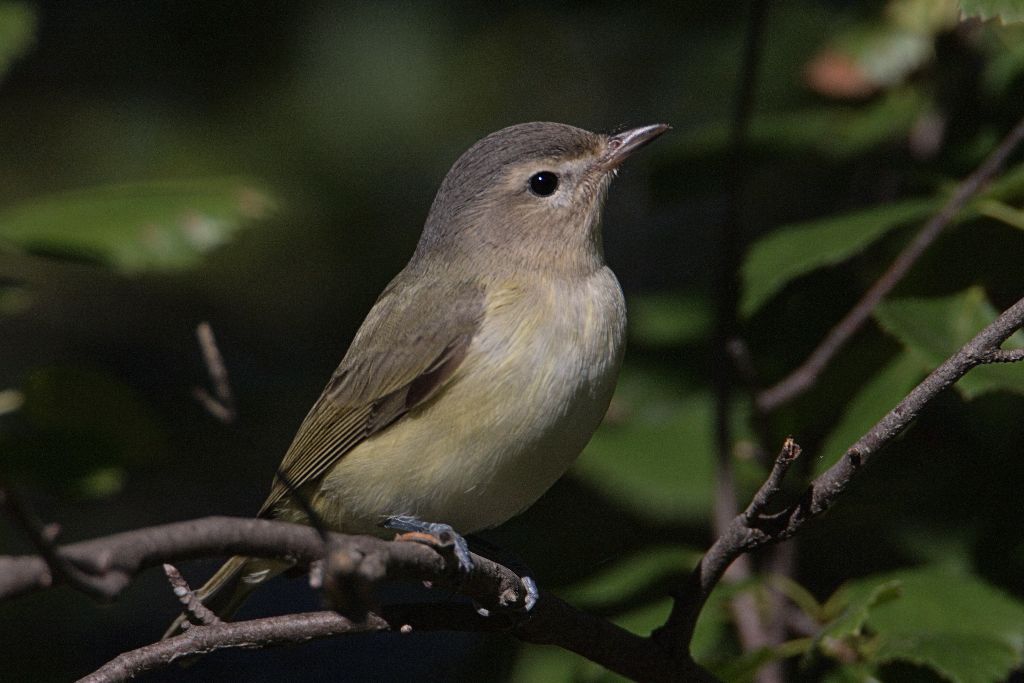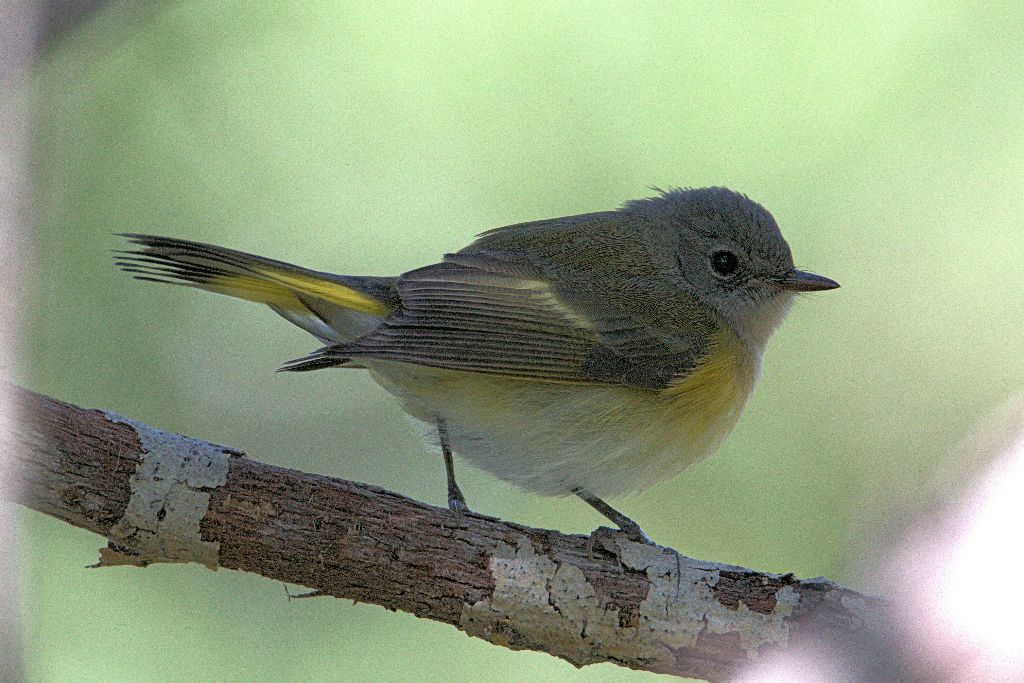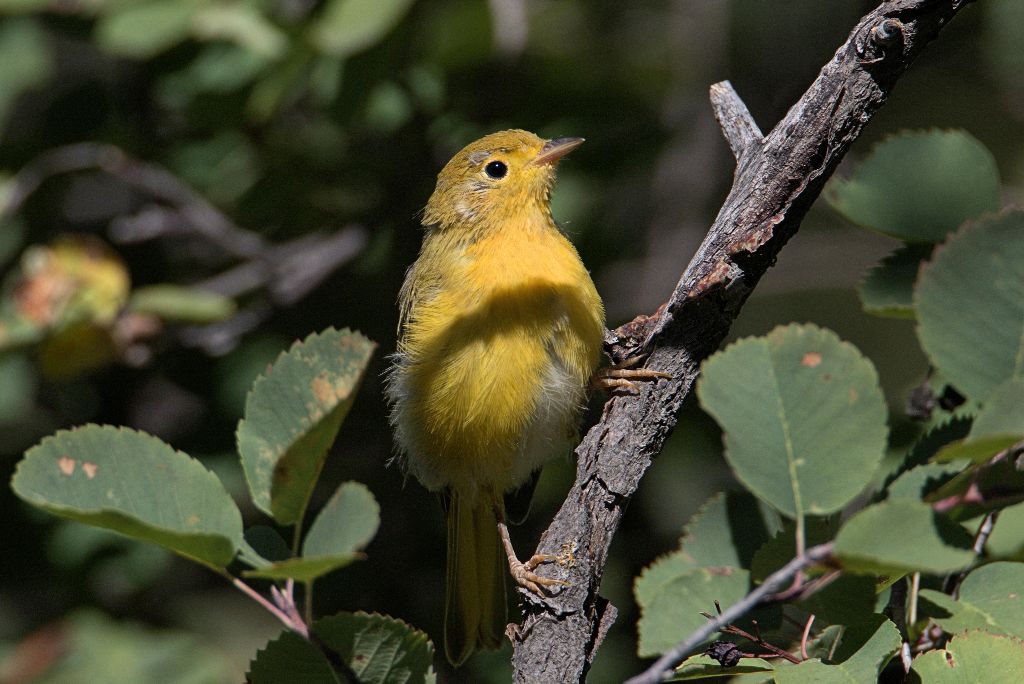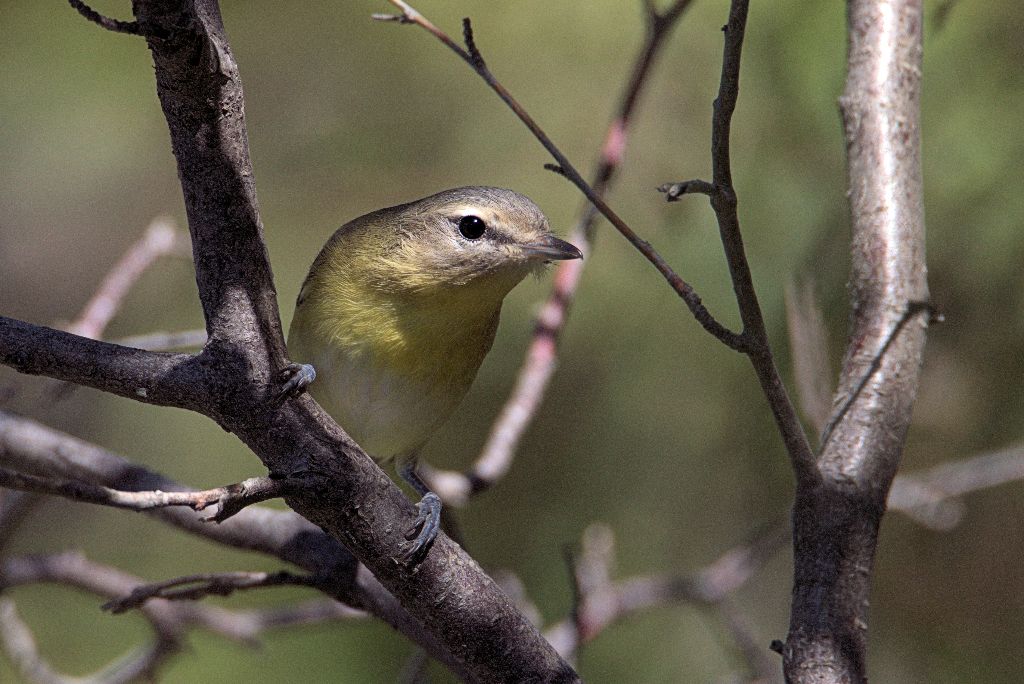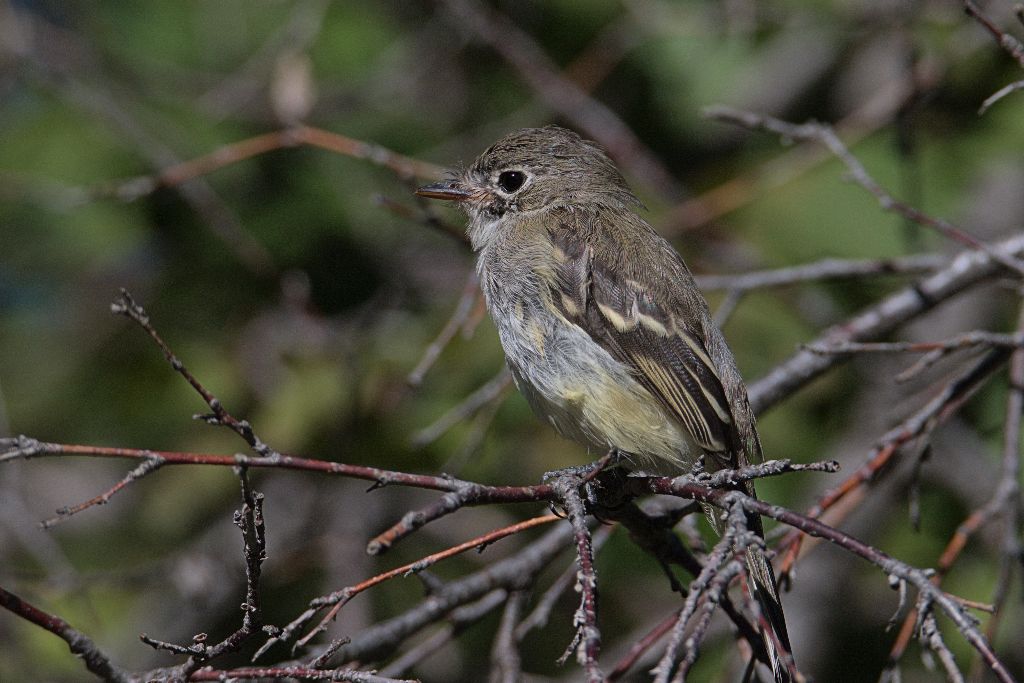Posted by Dan Arndt
It certainly didn’t feel anything like fall on our last few outings with the Friends of Fish Creek. Aside from a little bit of snow sticking around, and a bit of a brisk start, we’ve had incredible luck with our fall weather here in Calgary, or at least on our Sunday walks!
Bebo Grove is one of our most anticipated outings in the fall for a number of reasons, all of which are owls. Northern Pygmy-Owls were the star last fall and winter, and there’s always the chance of finding Great Gray Owls, Barred Owls, and of course Great Horned Owls. It is also relatively dense spruce forest, which draws in both species of crossbill, Pine Grosbeaks, and even Common and Hoary Redpolls.
While we didn’t have much luck in the redpoll department, we did have a good variety of everything else, and even had a couple bonus raptors show up!
For the third (maybe fourth?) year in a row, the star of our show was Bob. Bob is a Red-breasted Nuthatch with a fairly prominent patch of leucism (read: white feathers) on his head. He’s the dominant bird in his little mixed flock of Black-capped and Boreal Chickadees, Red-breasted Nuthatches, and Brown Creepers, which is noticeable immediately when he is being fed. He flies in, right to the food, flushing every other bird nearby, and coming back time and time again to gather more for his numerous caches.
[exif id=”14988″]
We searched for American Three-toed Woodpeckers, Black-backed Woodpeckers, and even Pileated Woodpeckers in the area surrounding the picnic tables, but came up almost entirely empty. We did find a Hairy Woodpecker a little bit to the west, but once we entered the next stand of spruce between Bebo Grove and Shannon Terrace, things really started getting busy!
[exif id=”14989″]
We stopped shortly after to investigate the tops of the nearby spruce trees, as cones began raining down onto the pathway in front of us. Nearly a hundred White-winged Crossbills were filling the trees above us, calling, feeding, and flying about in a frenzy.
[exif id=”14998″]
As we were walking through the dense spruce, we heard some agitated chattering of chickadees and nuthatches, as if they were harassing a predator of some sort. We searched around and as we came into a clearing to get close enough to investigate, a young Great Horned Owl flushed up from a spruce across the clearing, flying west and away. It definitely pays to check these things out, even if its only a rare occasion where you actually do stumble upon a prize like that! As we scanned the trees north of the clearing for where the owl went, we did spot this distant Sharp-shinned Hawk. It’s just too bad it didn’t stick around when we got just a little bit closer later on.
[exif id=”14990″]
A little further to the west, we found yet another mixed flock, and had a few Boreal Chickadees, Black-capped Chickadees, Brown Creepers and still more Red-breasted Nuthatches feeding heavily in the trees, and a few even posing nicely for us.
[exif id=”14991″]
Coming into the next clearing, we had a bit of a close encounter with a big Mule Deer buck. We actually found him first having a bit of a sparring match with a willow shrub, but as we walked by, he took notice of us and just had to show off his antlers.
[exif id=”14992″]
[exif id=”14993″]
We headed towards the barn at Shannon Terrace before turning back. It was a little more quiet to the west than we usually have it, but it wasn’t too much further along that we found out exactly why. This female Merlin was keeping a sharp eye on the ground below, especially one of the feeding stations, and looked quite interested in any little movement nearby.
[exif id=”14994″]
So with that, we headed back to take a second look for Northern Pygmy-Owls, Barred Owls, and American Three-toed and Black-backed Woodpeckers, but came up (mostly) empty, so we followed the edge of the wetland back to where we had found Bob earlier in the day, but were alerted to the presence of yet another Great Horned Owl by the chattering and squawking of a pair of Blue Jays.
[exif id=”15000″]
[exif id=”14997″]
It didn’t take too long for the Blue Jays to lose interest and fly off, leaving this big, beautiful owl to snooze the rest of the day away.
Thanks again for reading, and have a great week and good birding!
